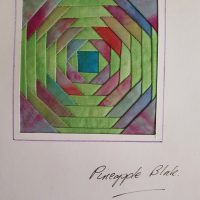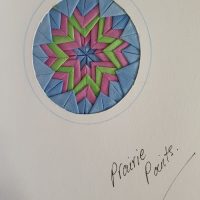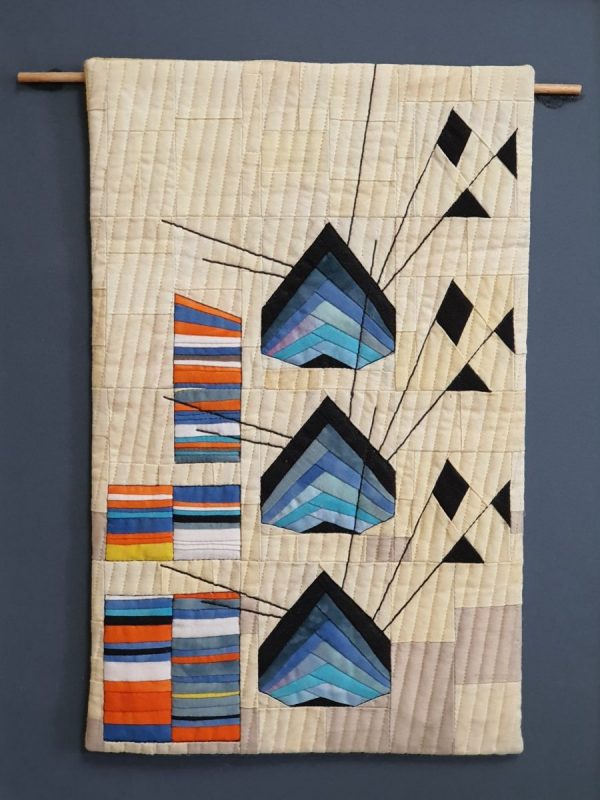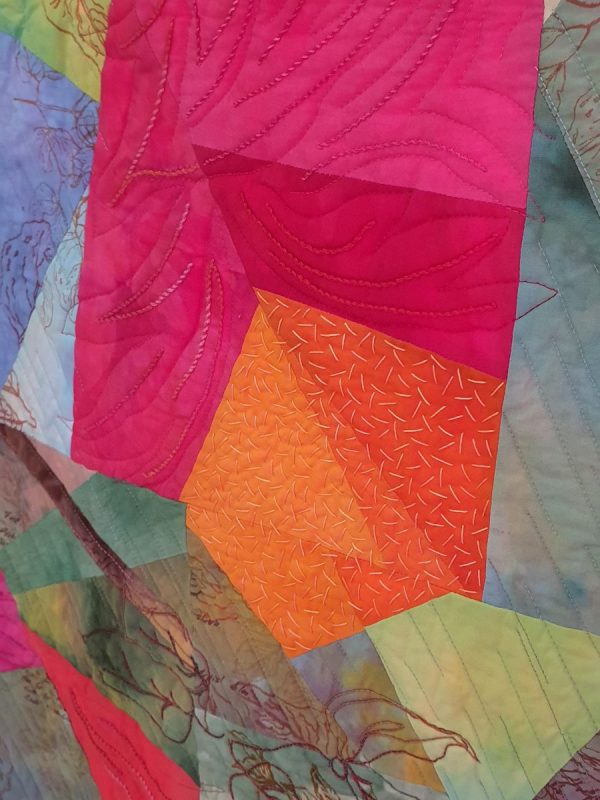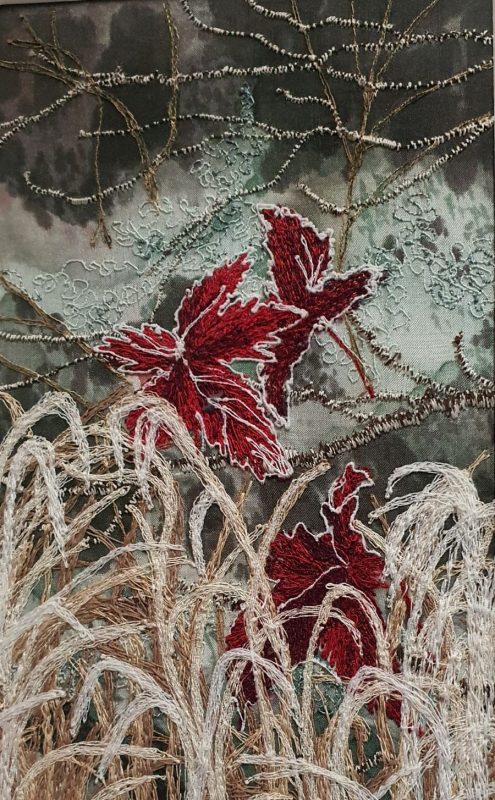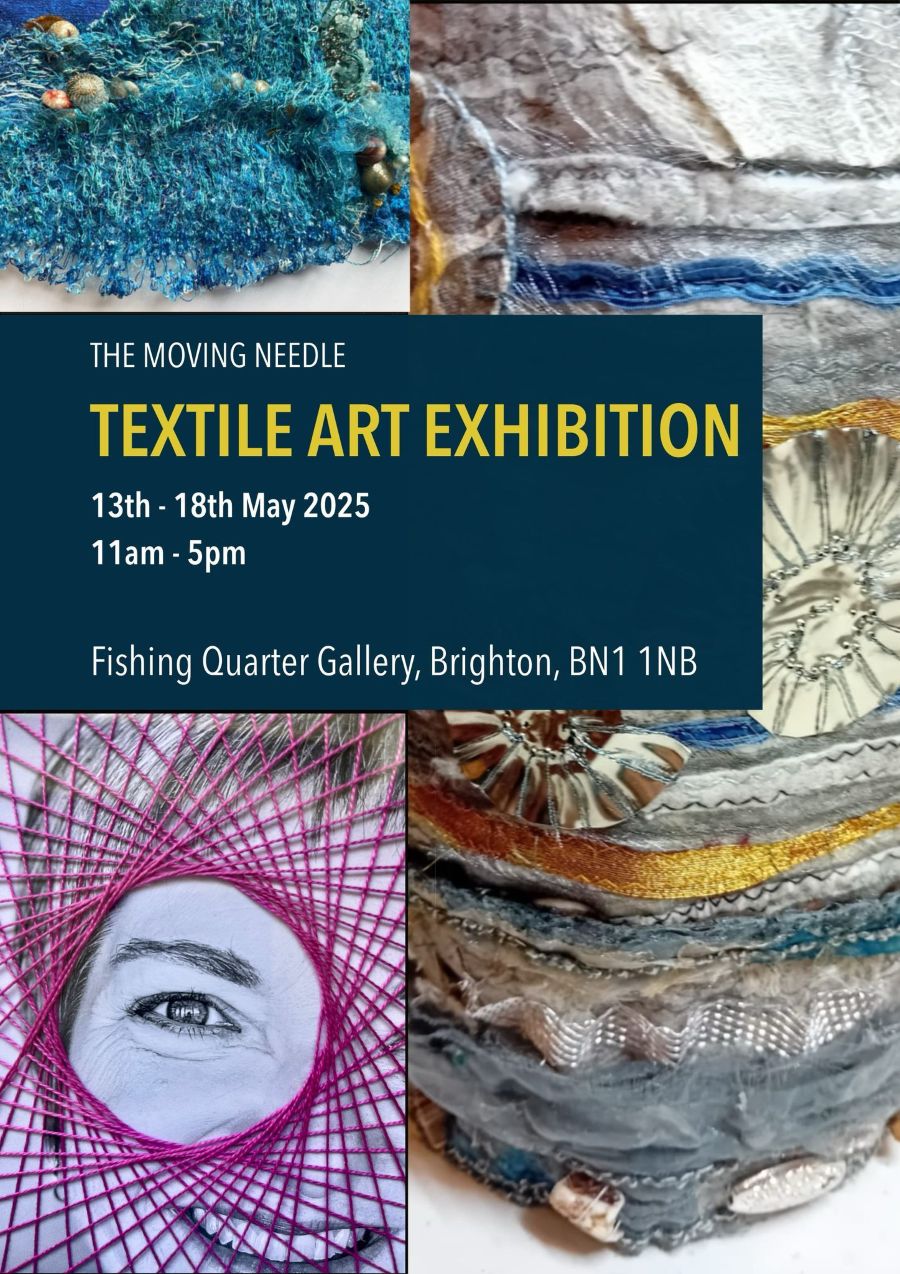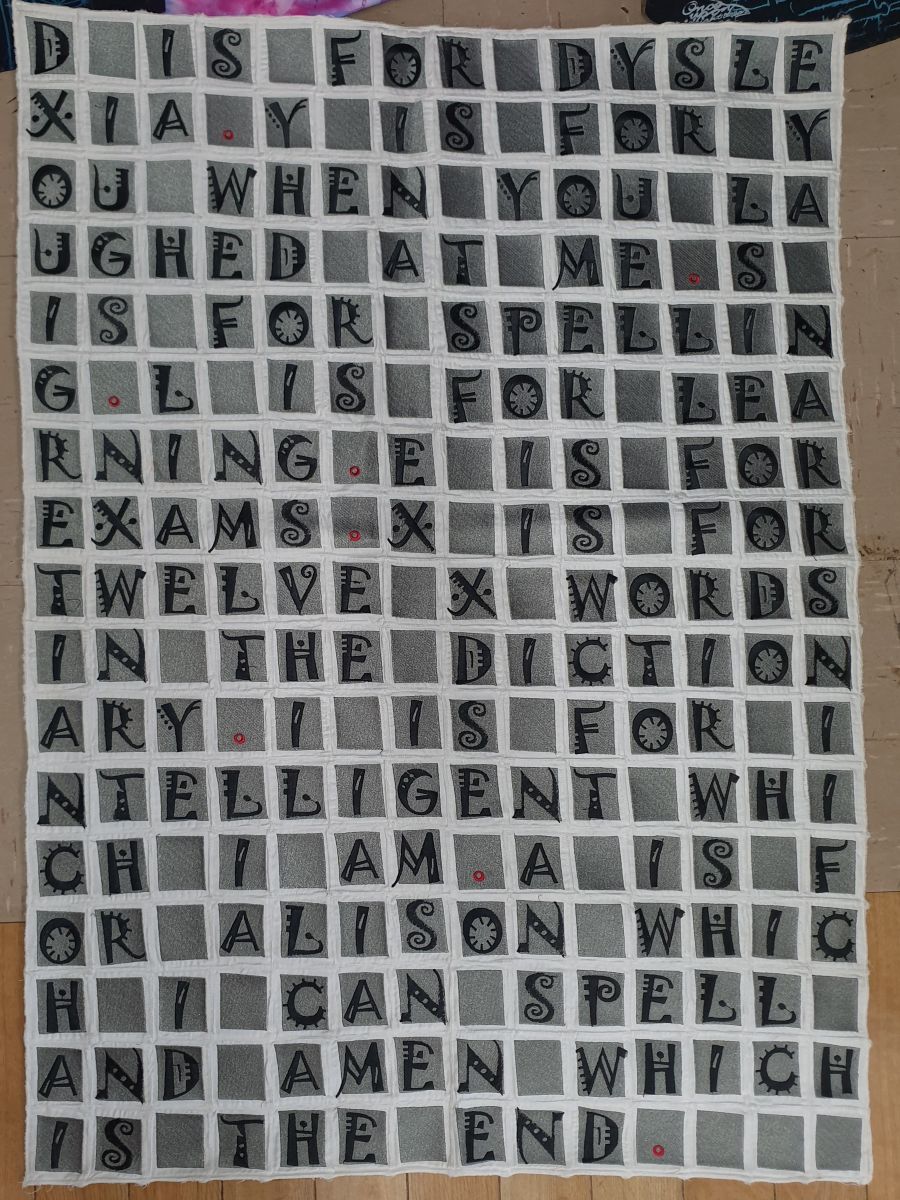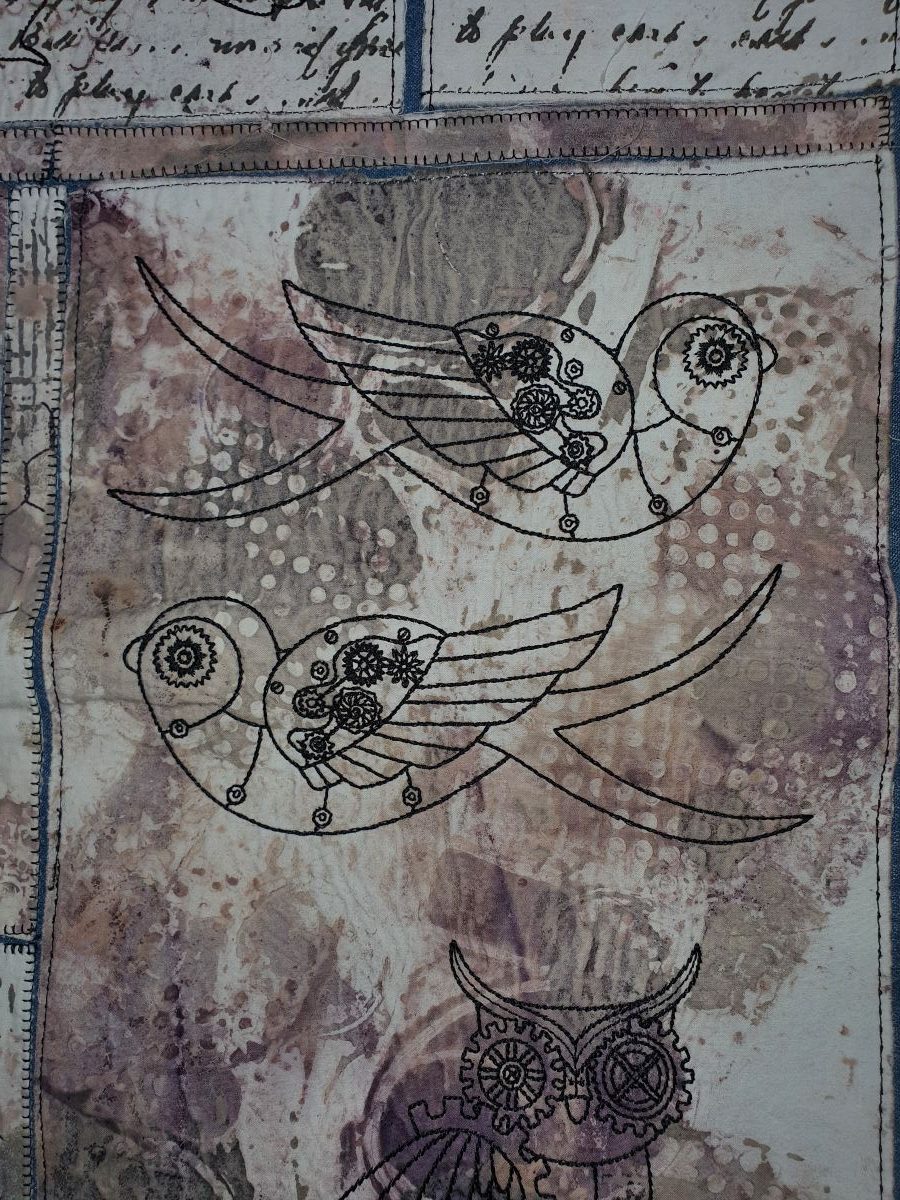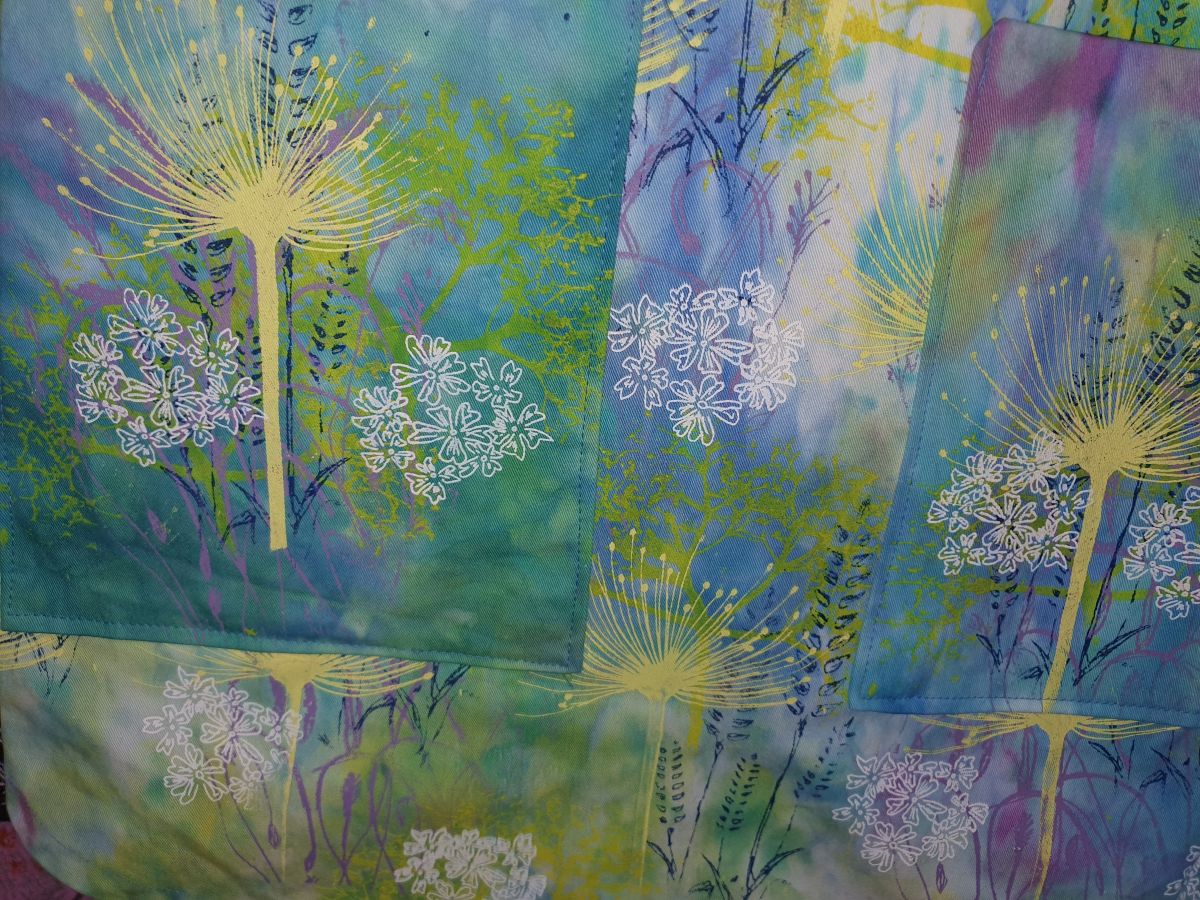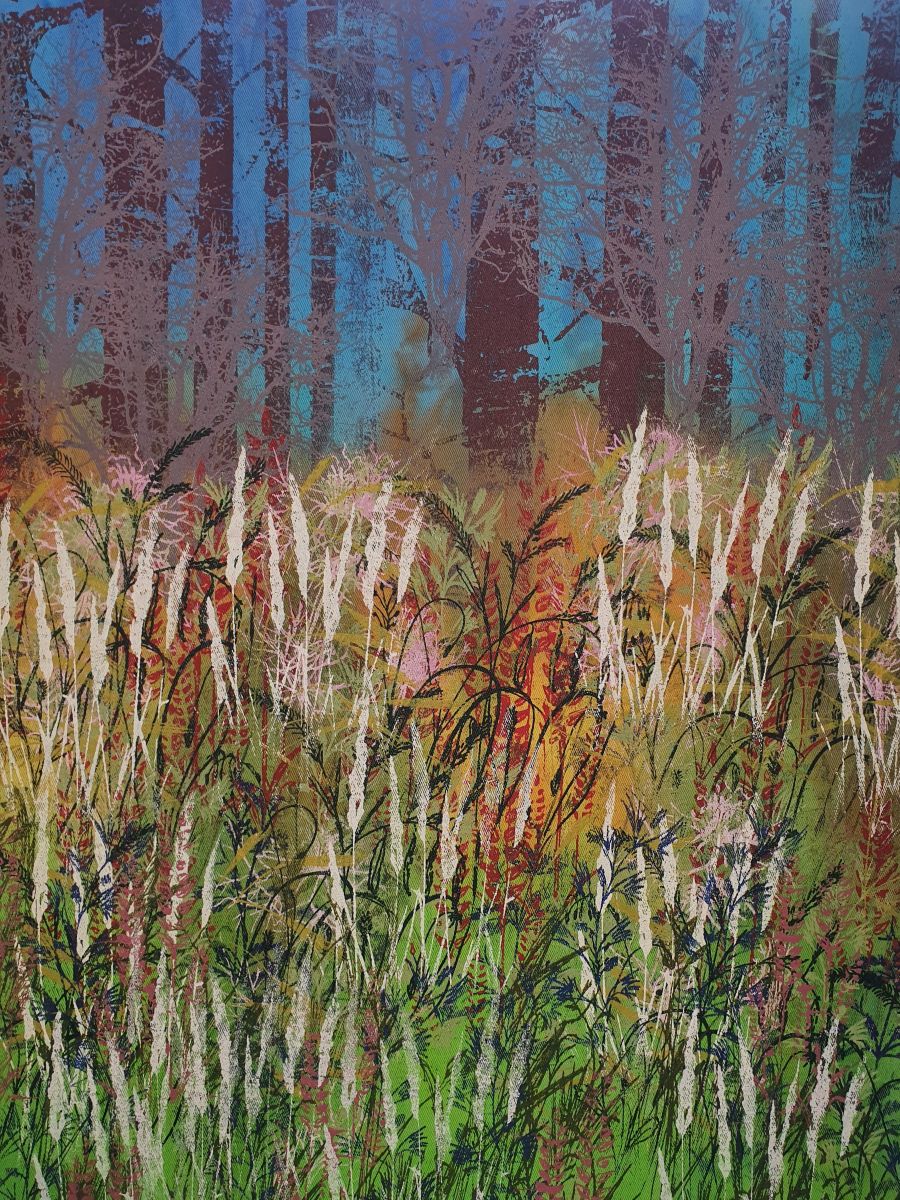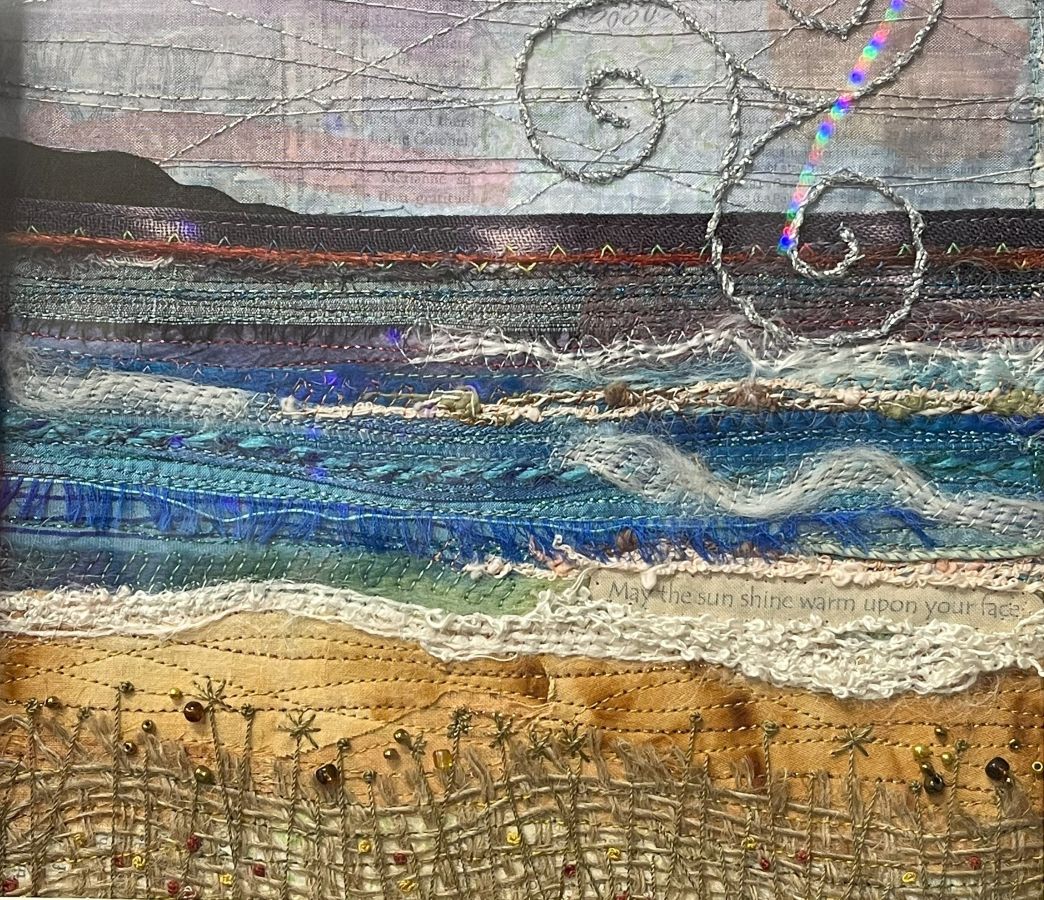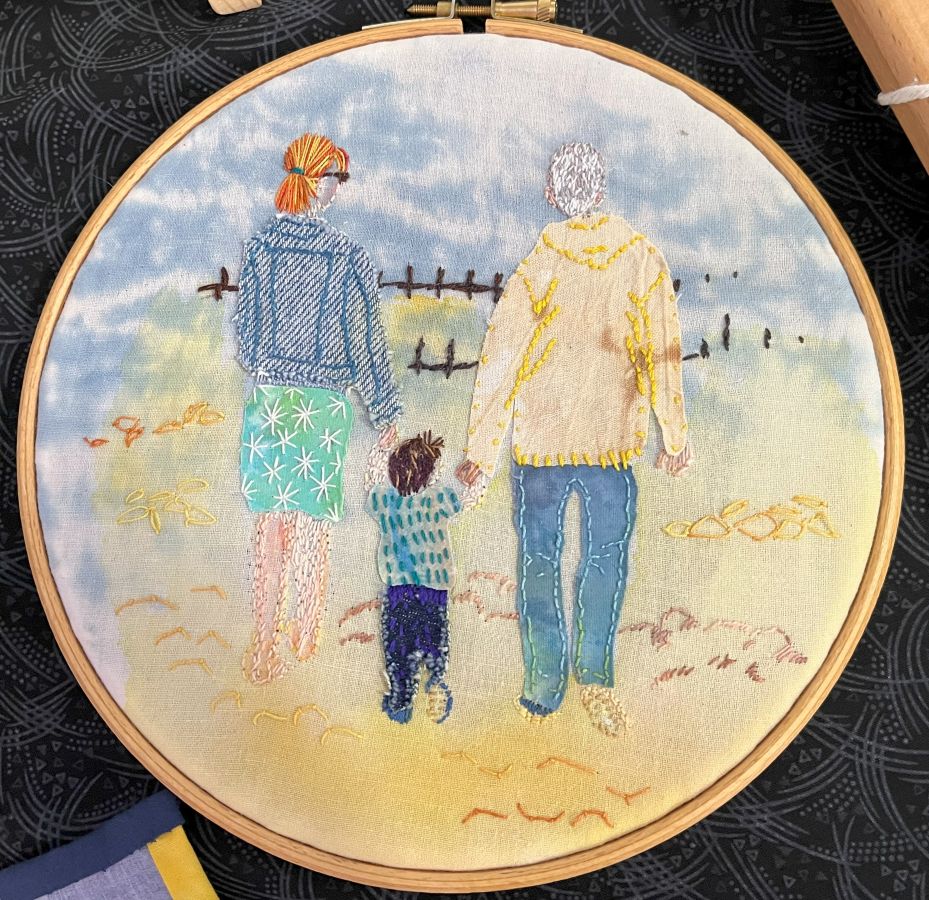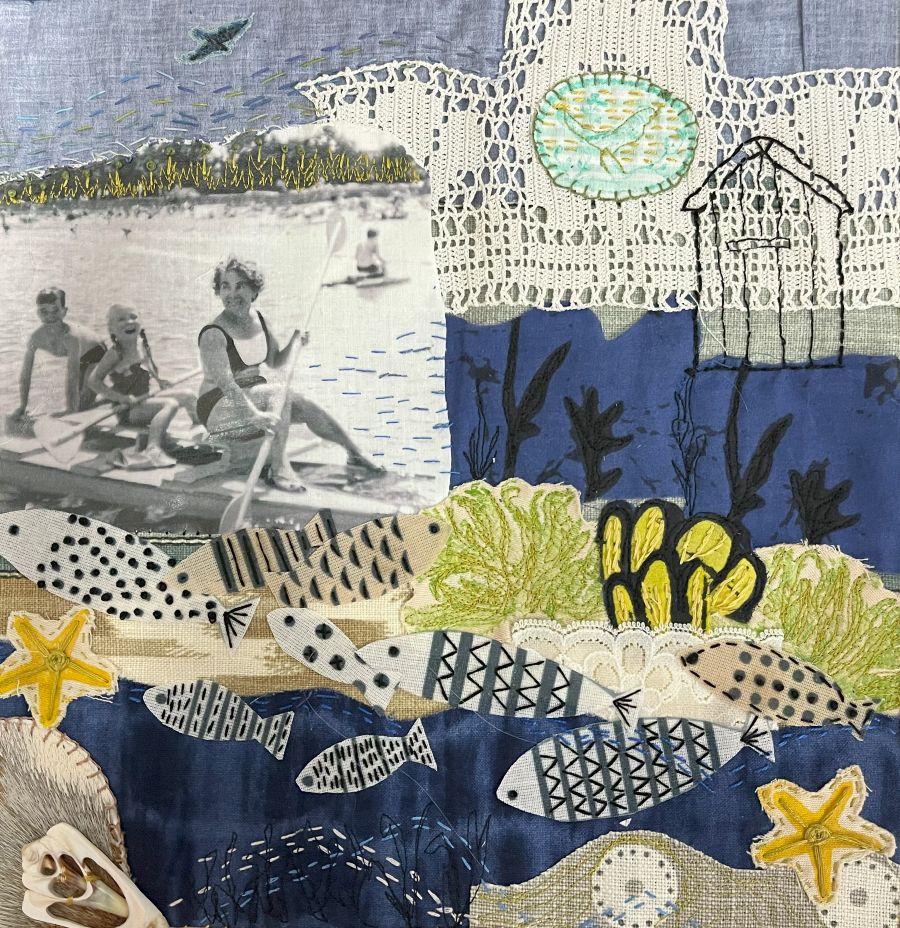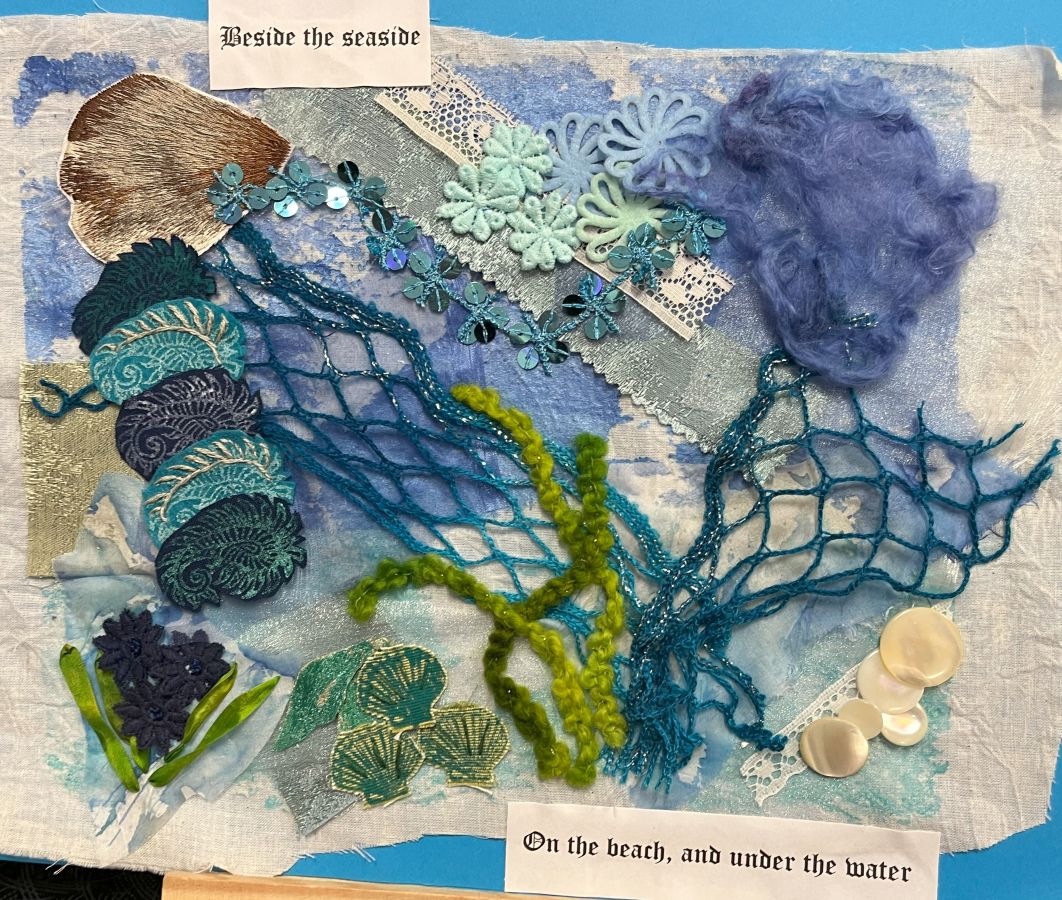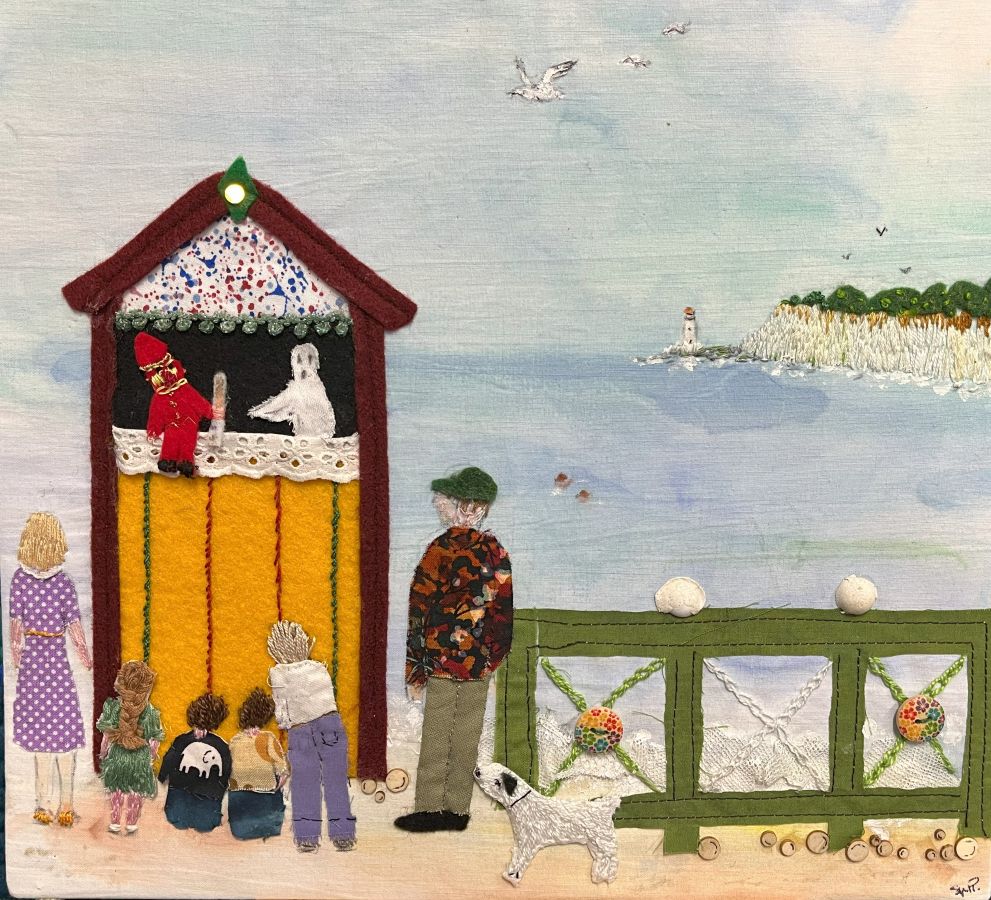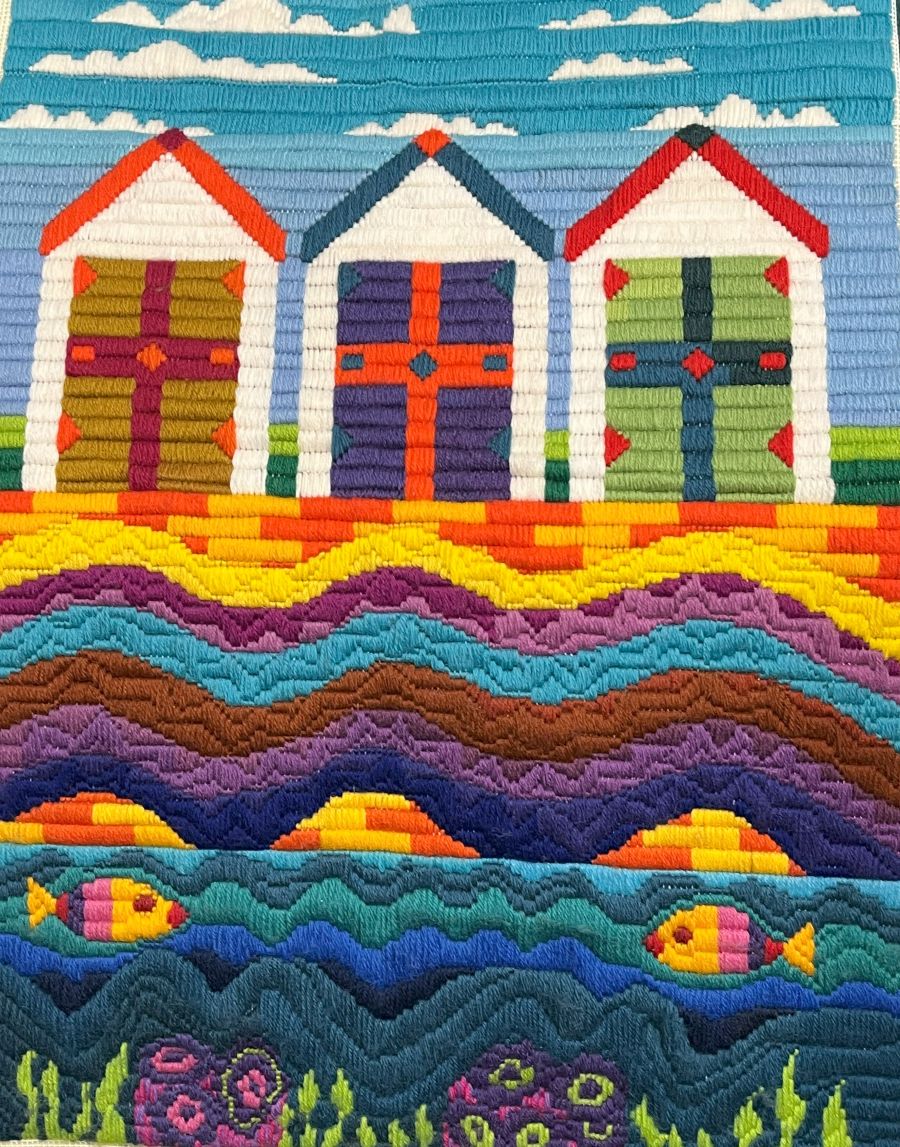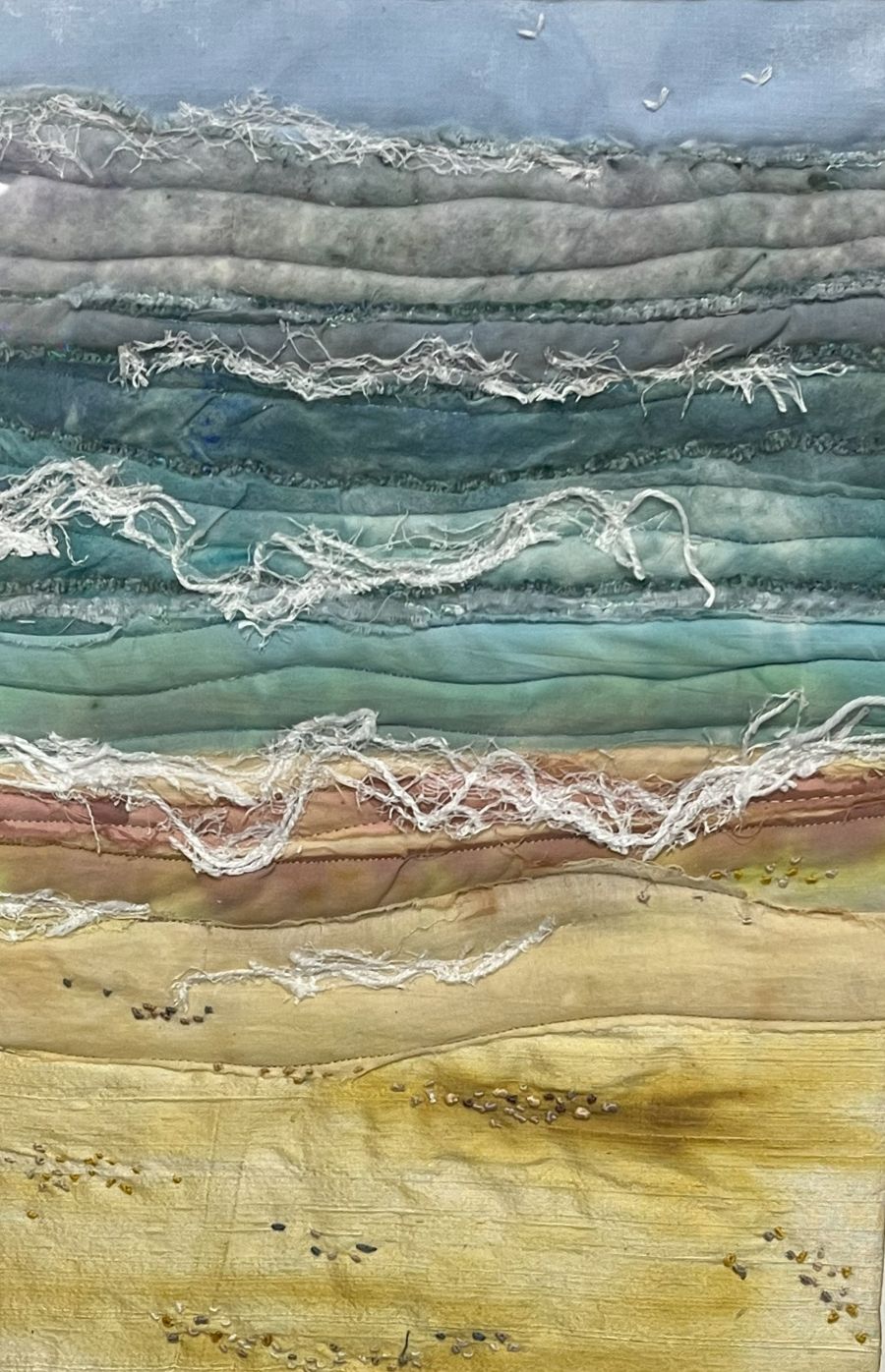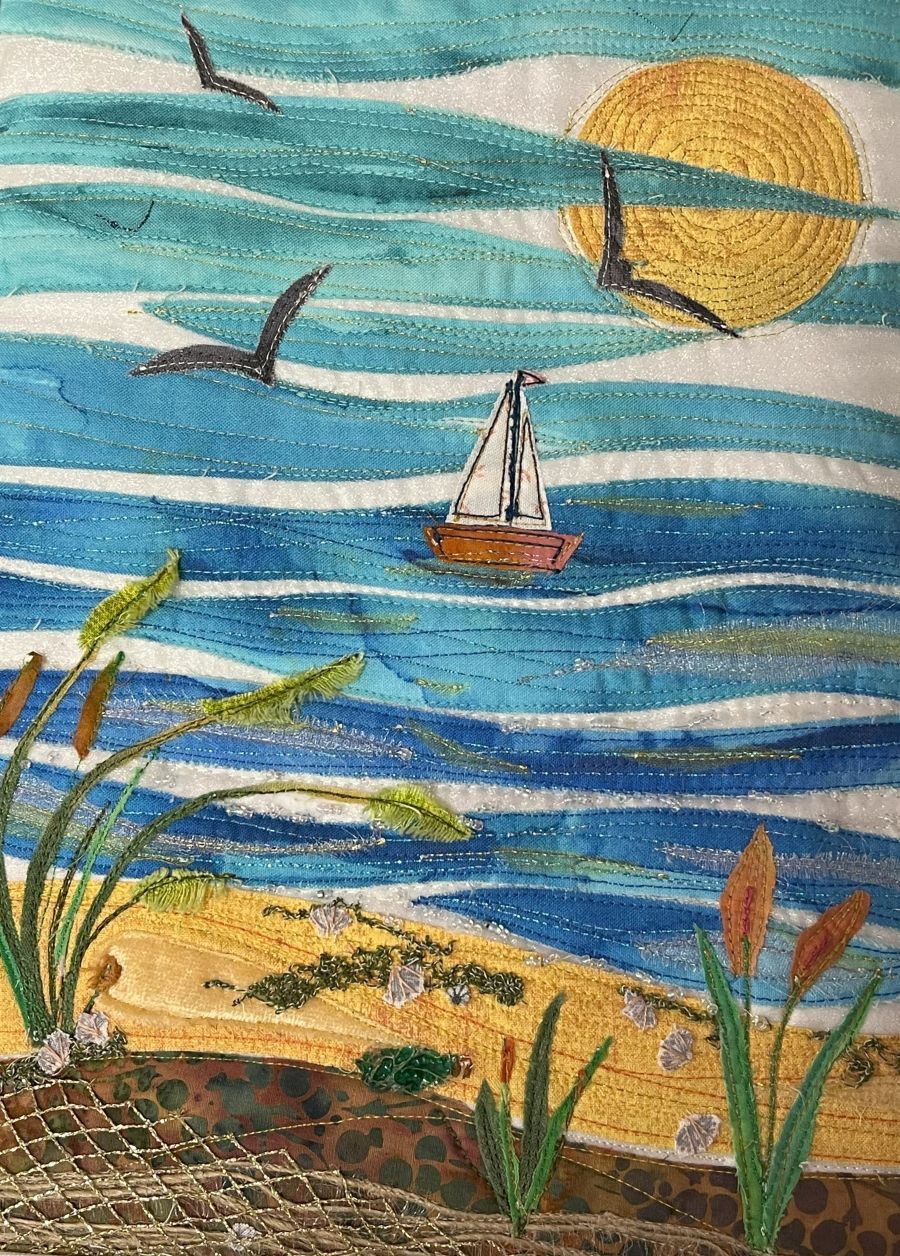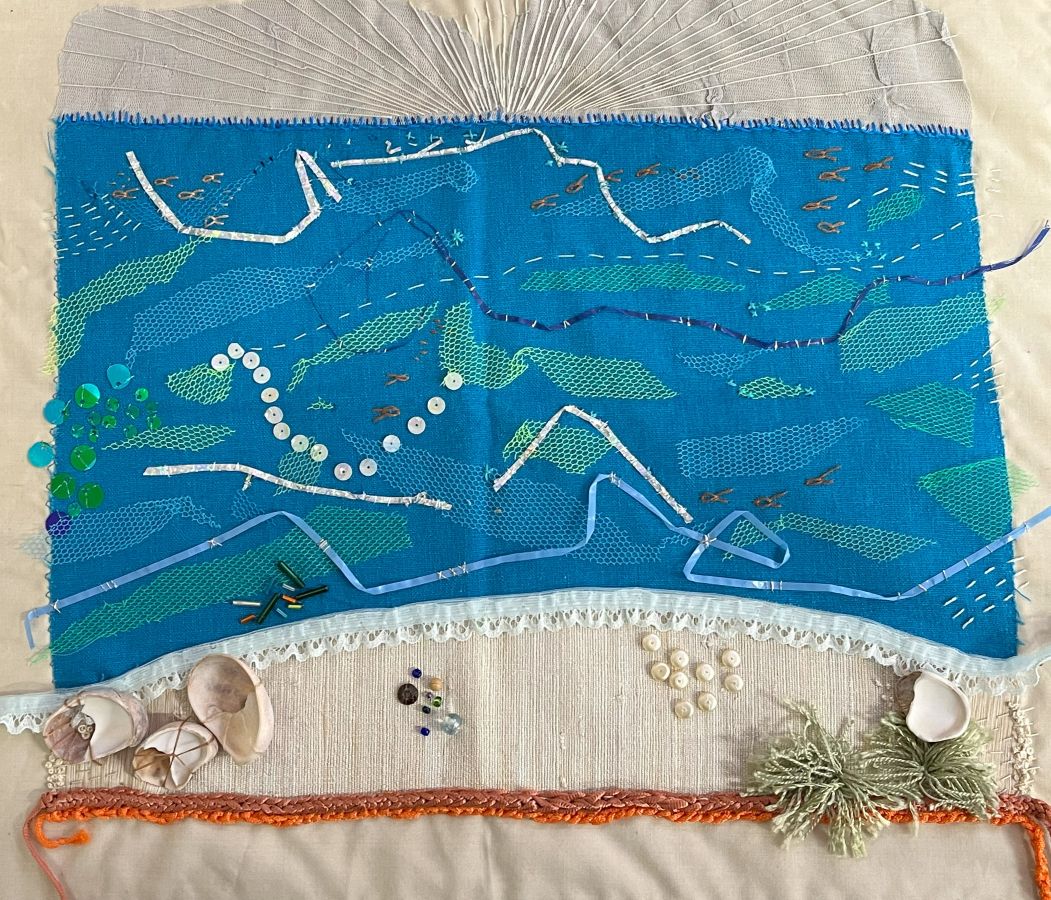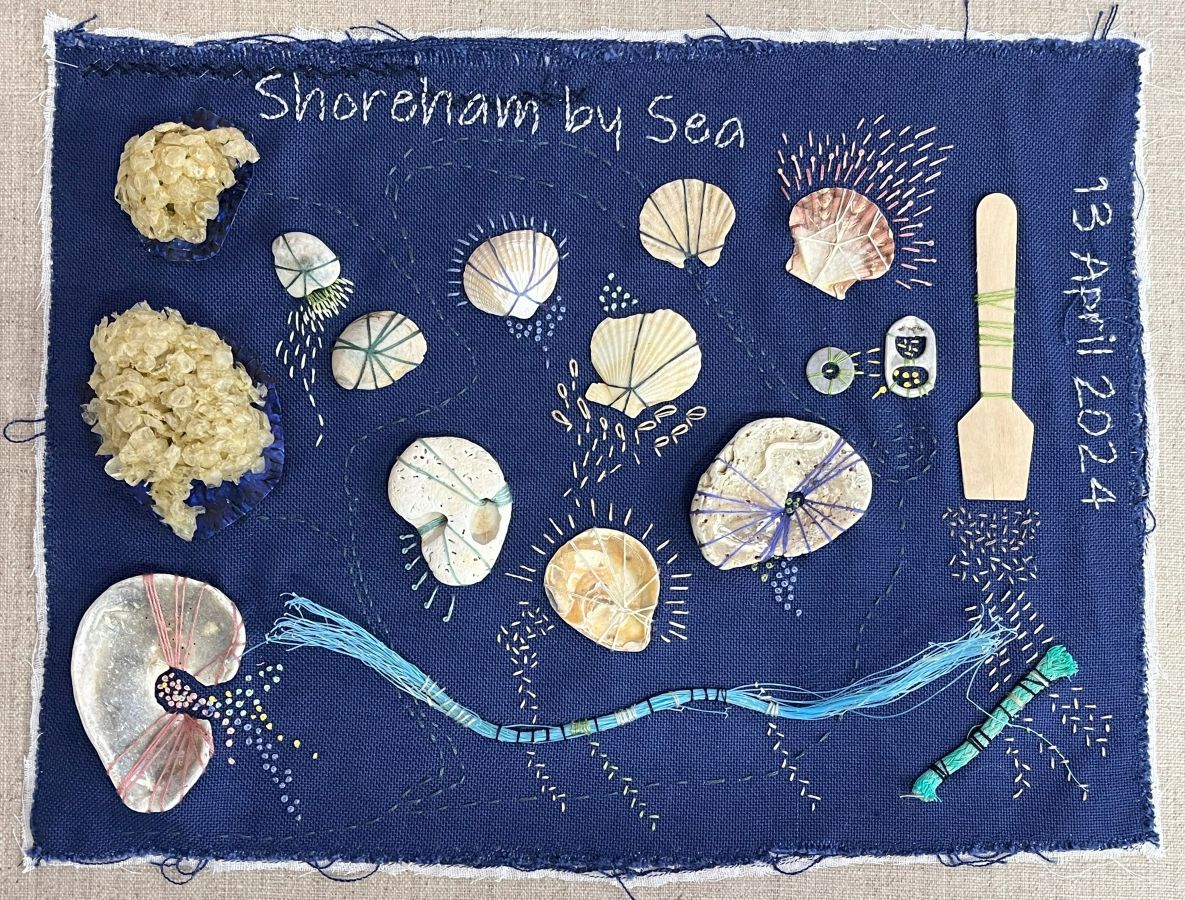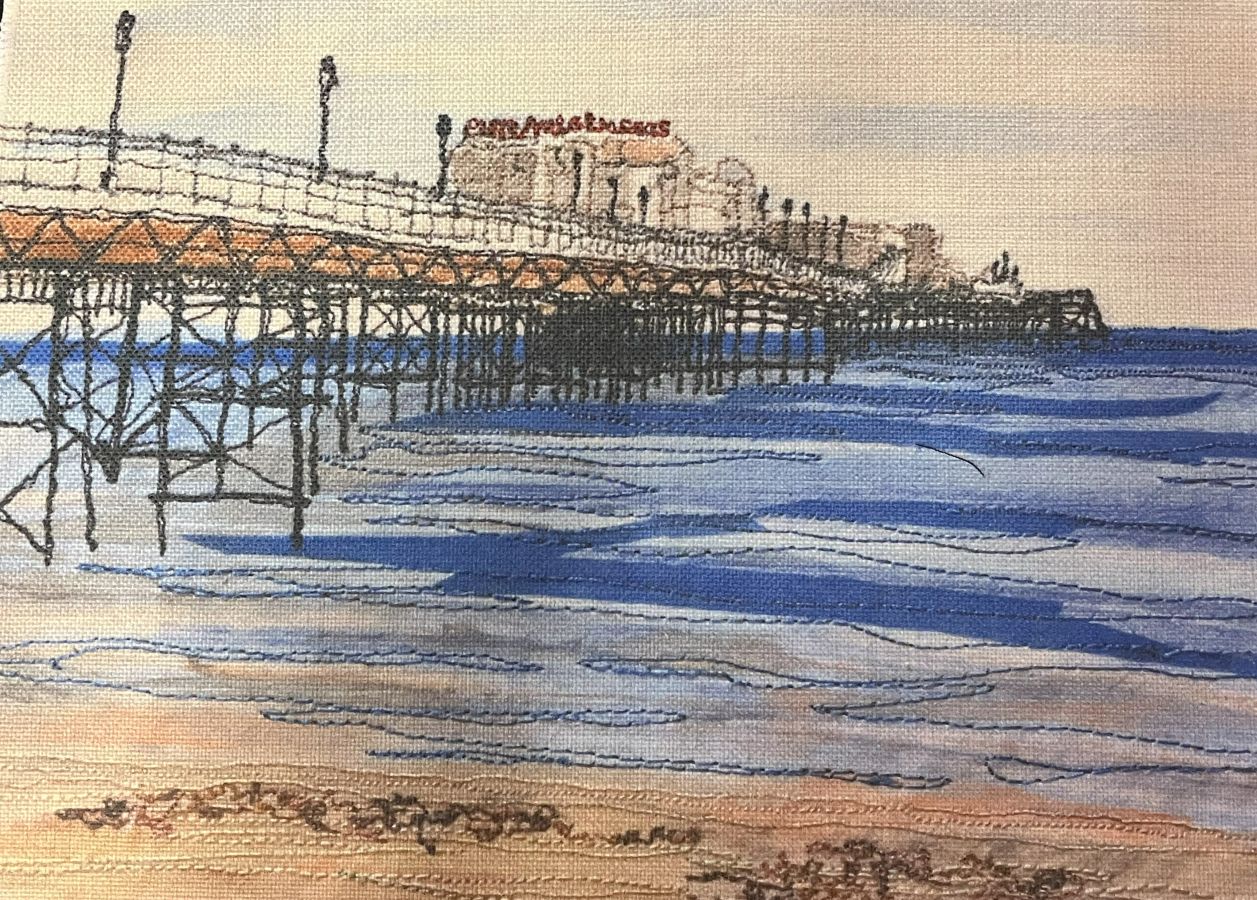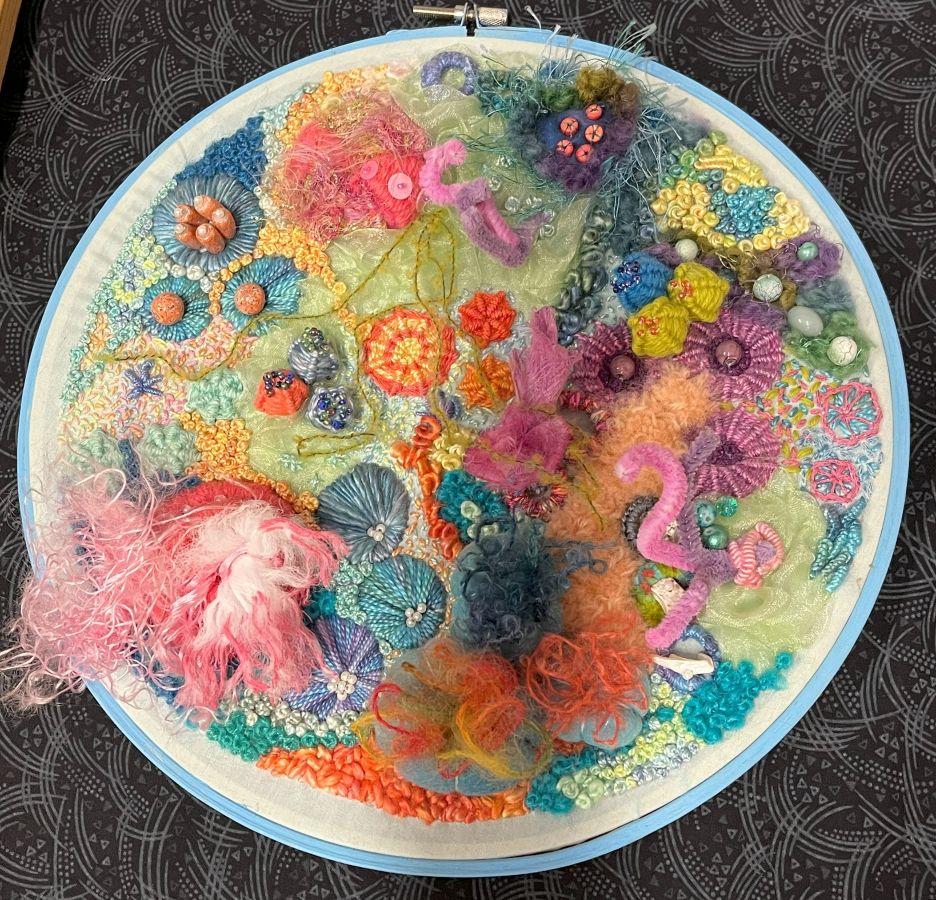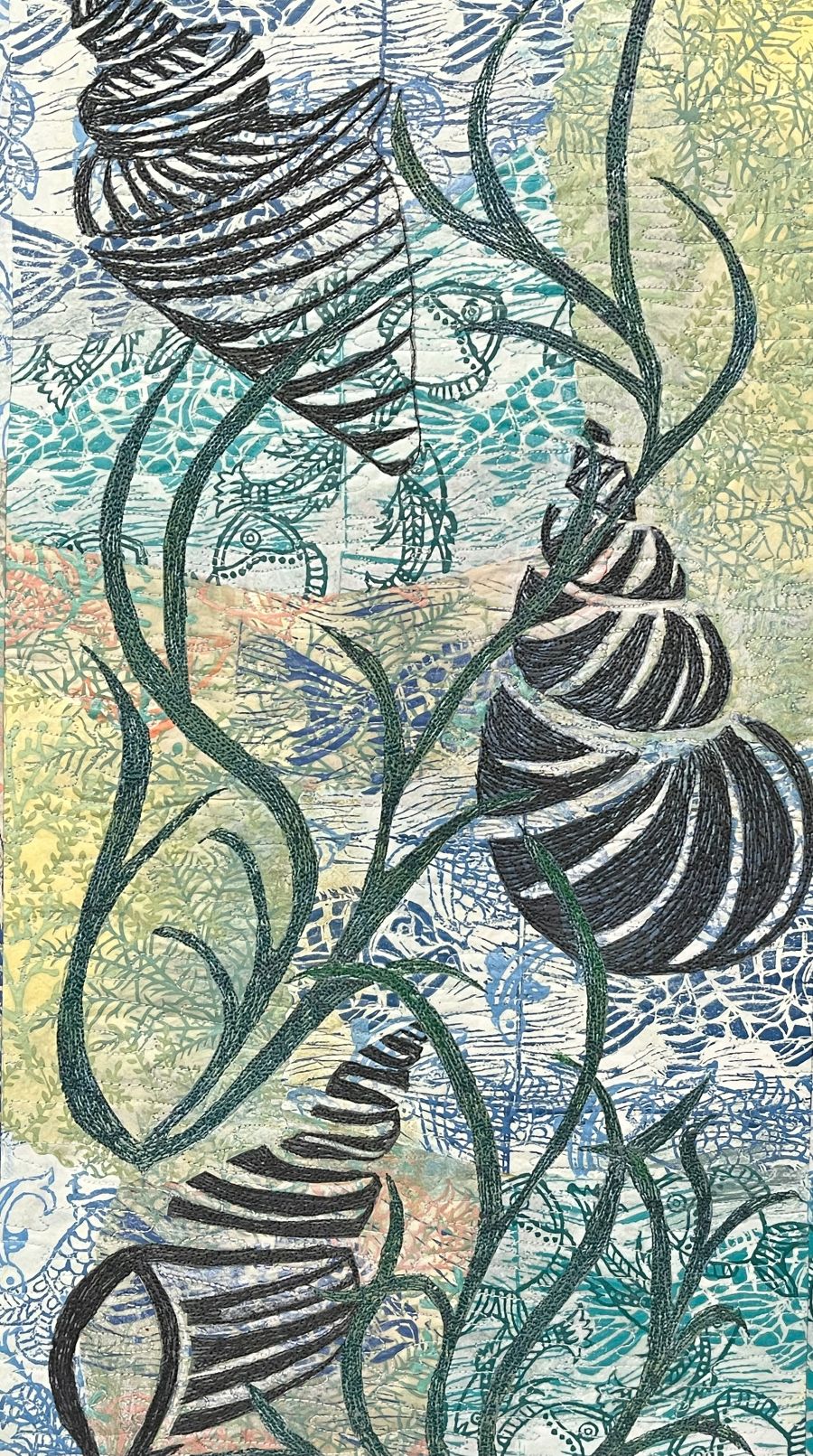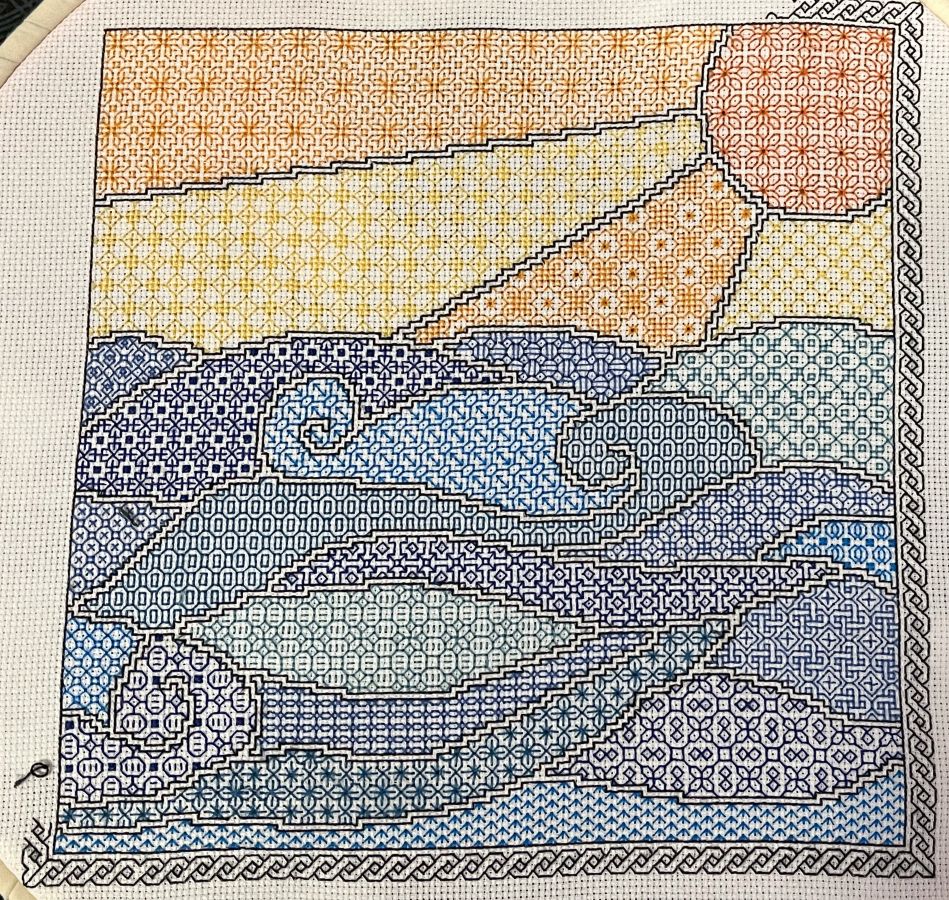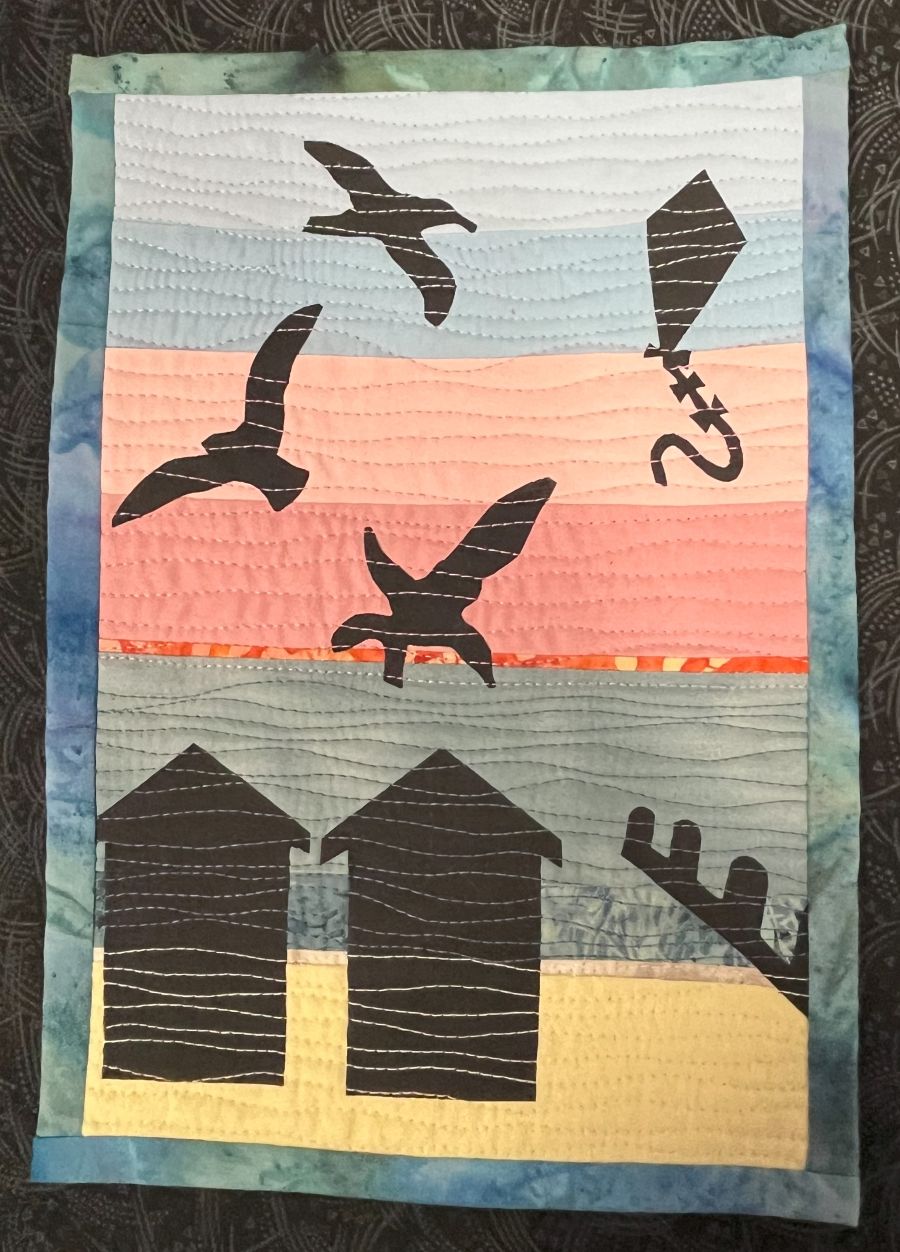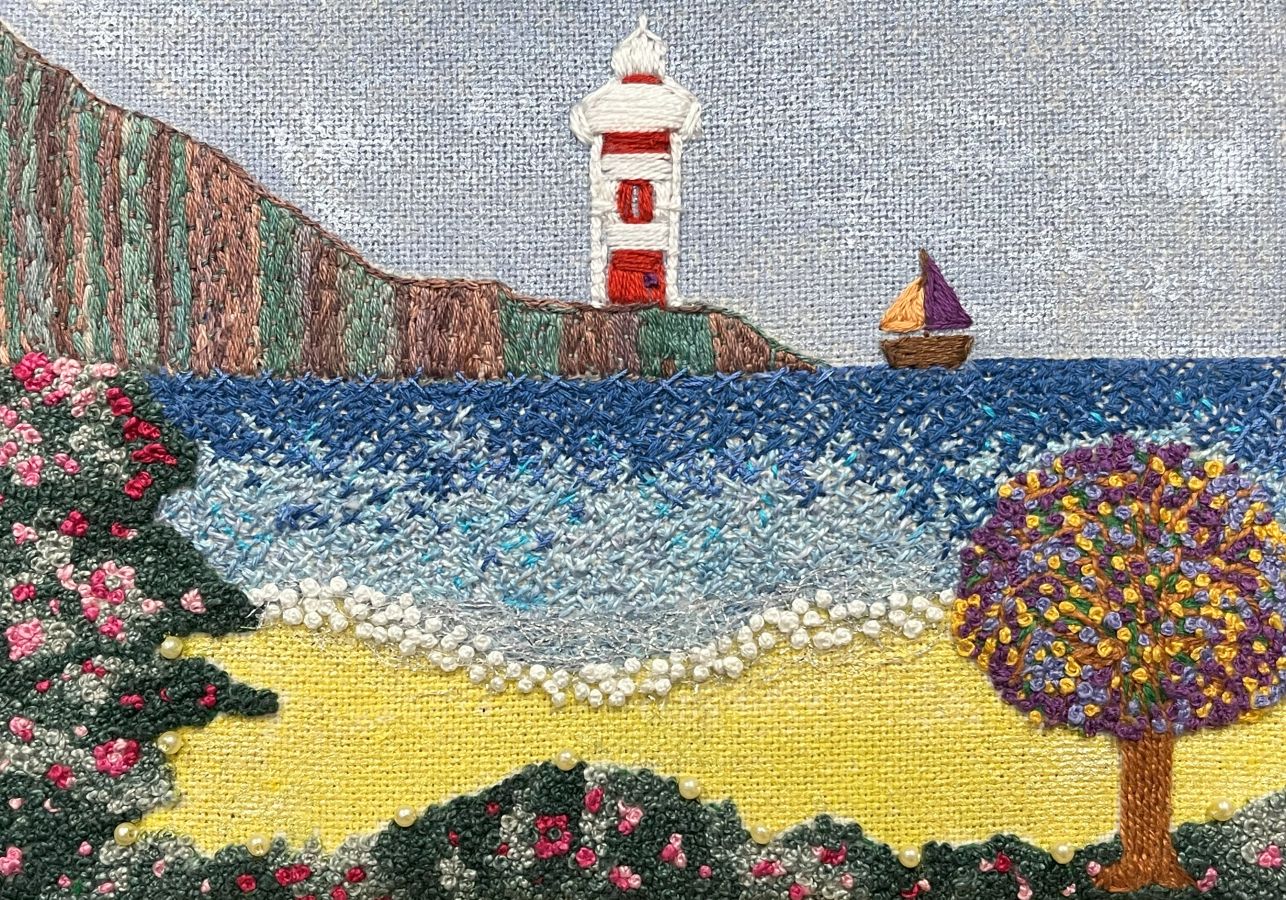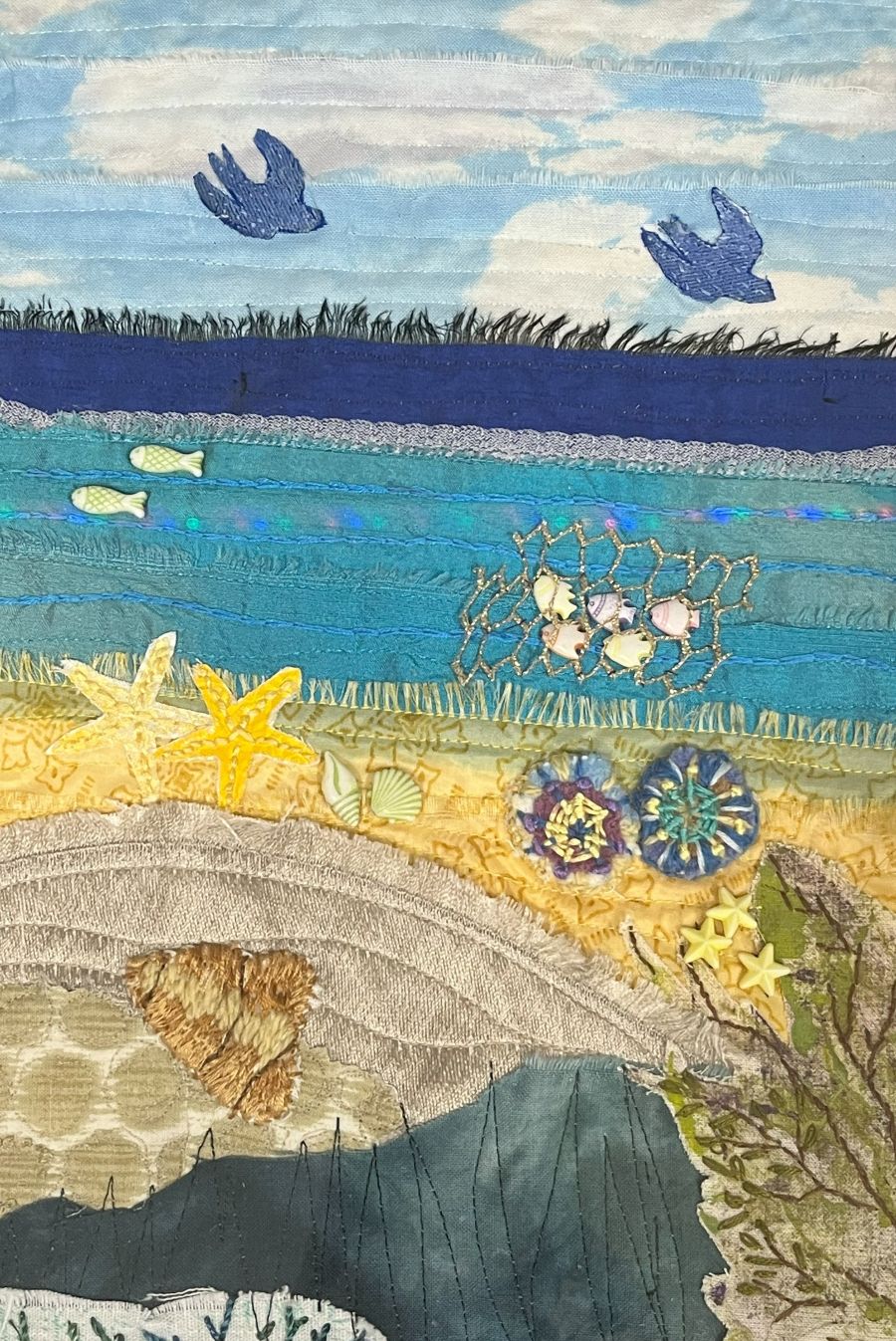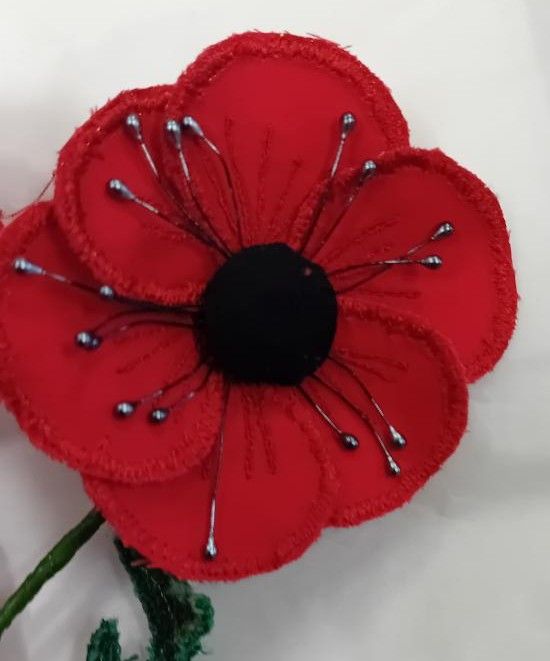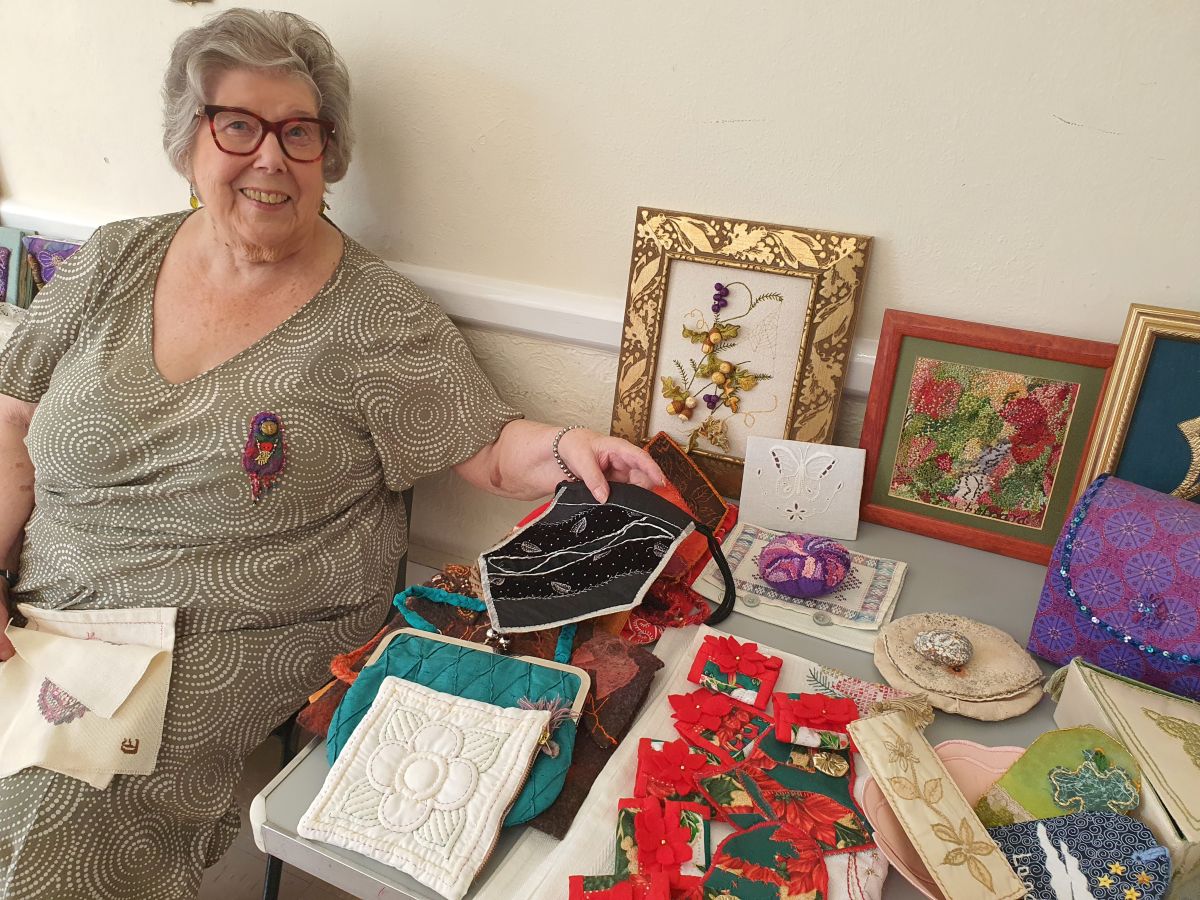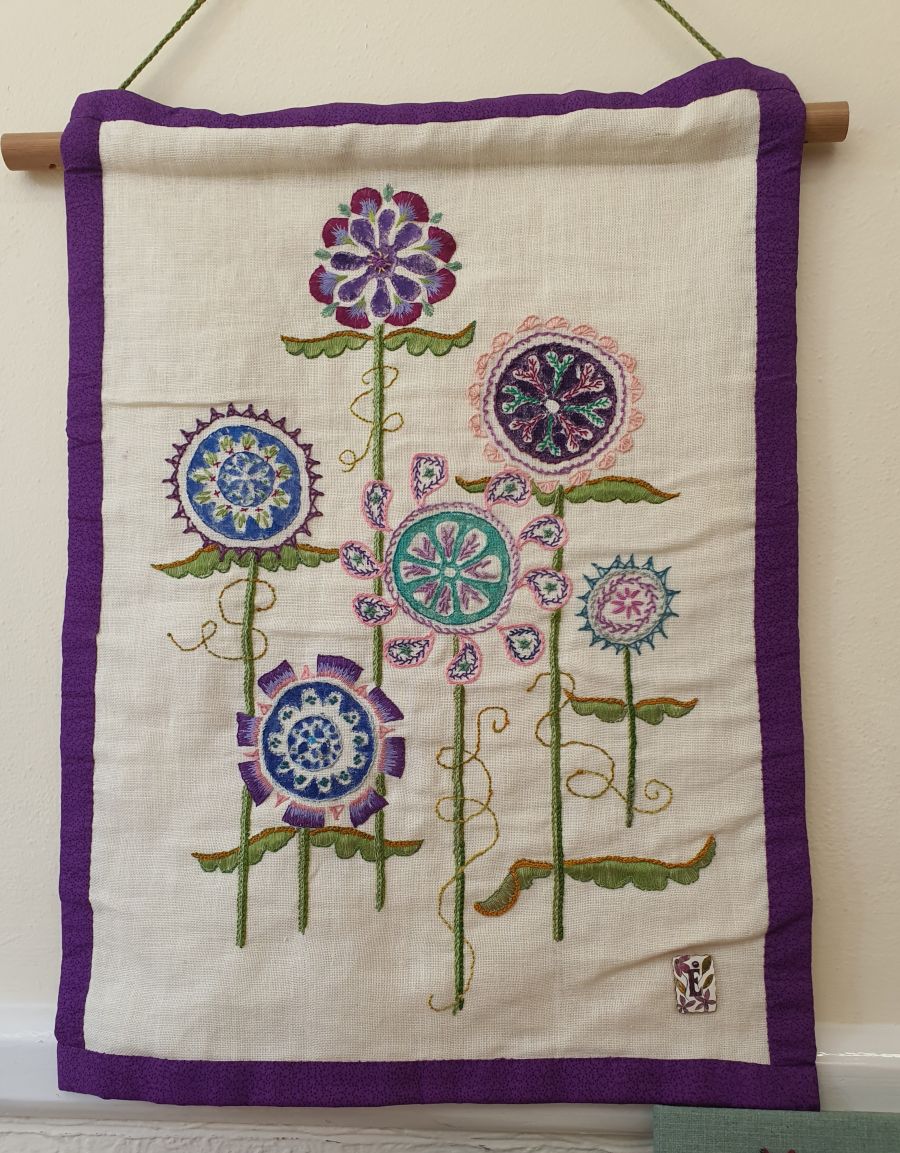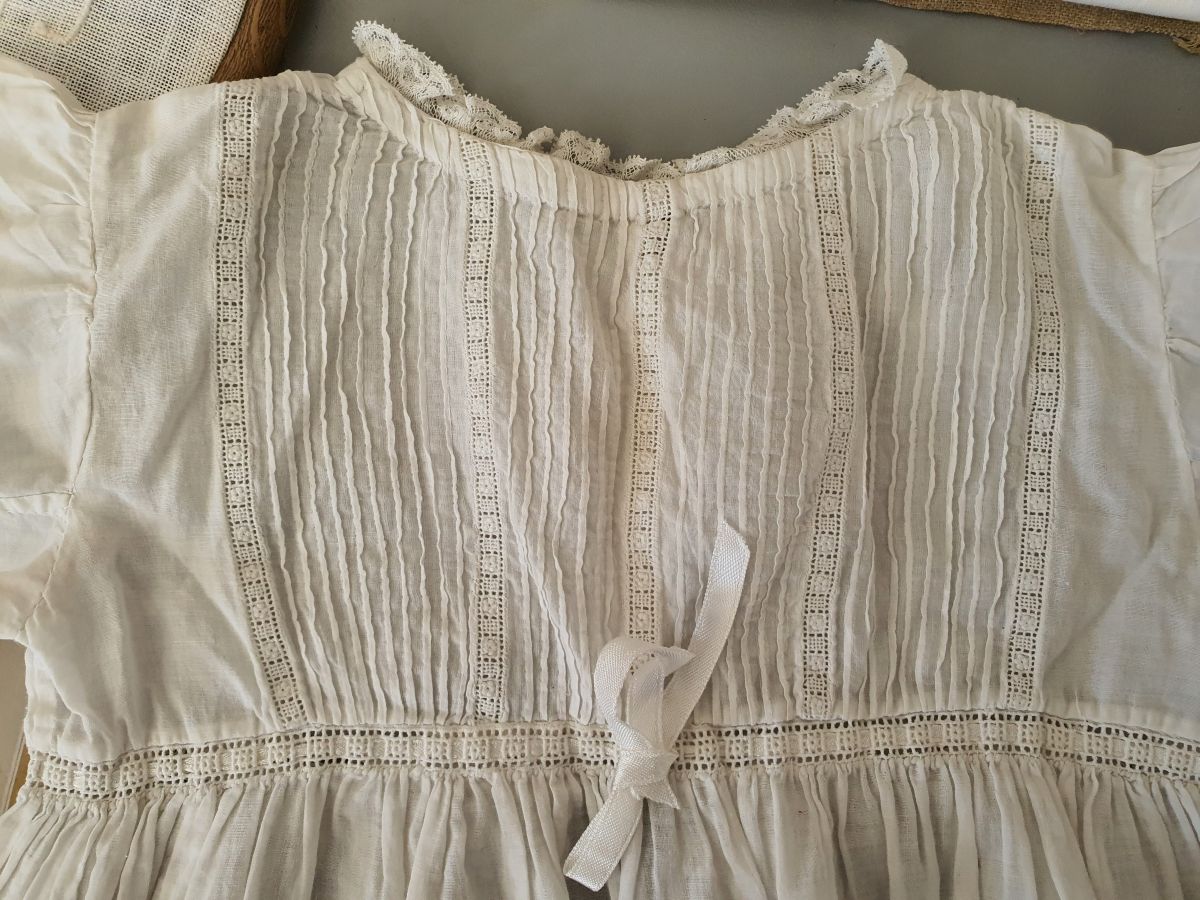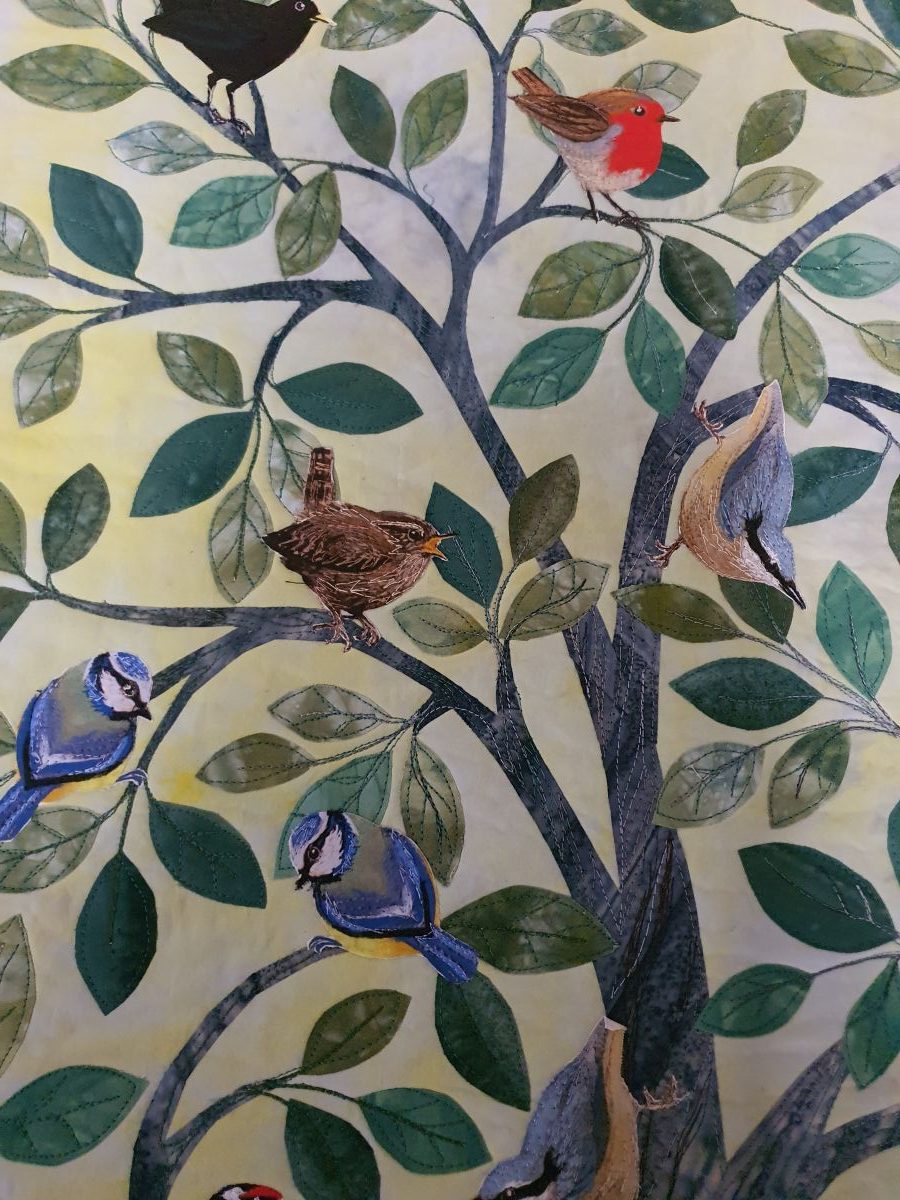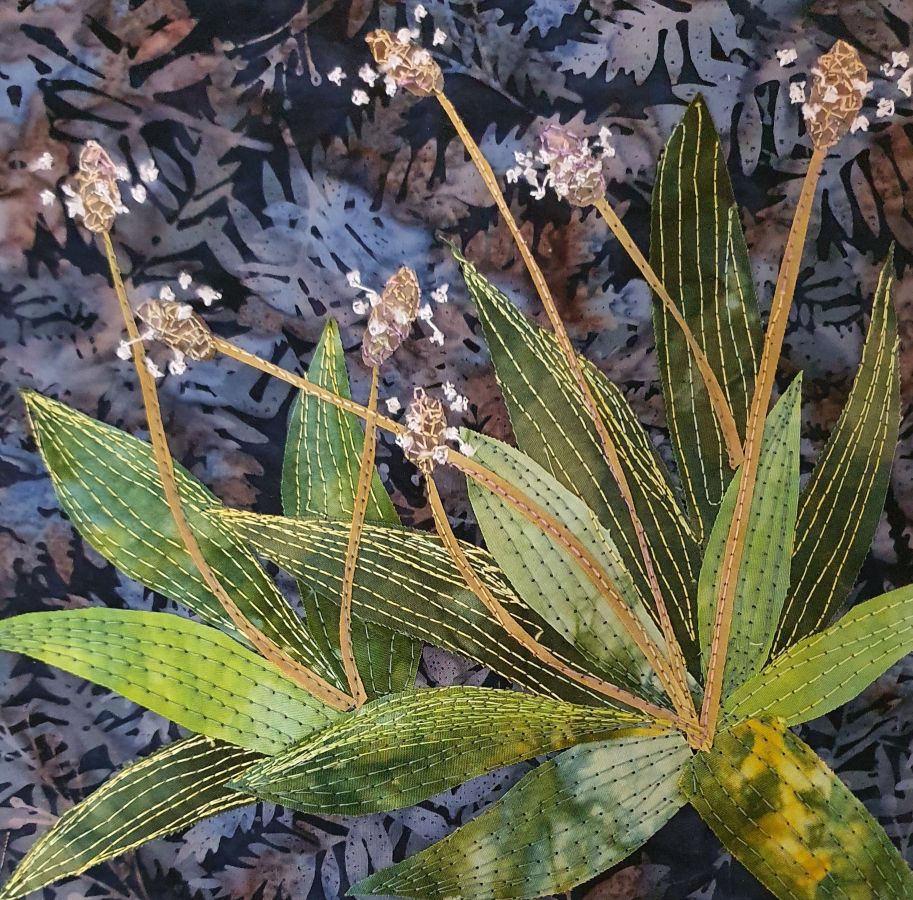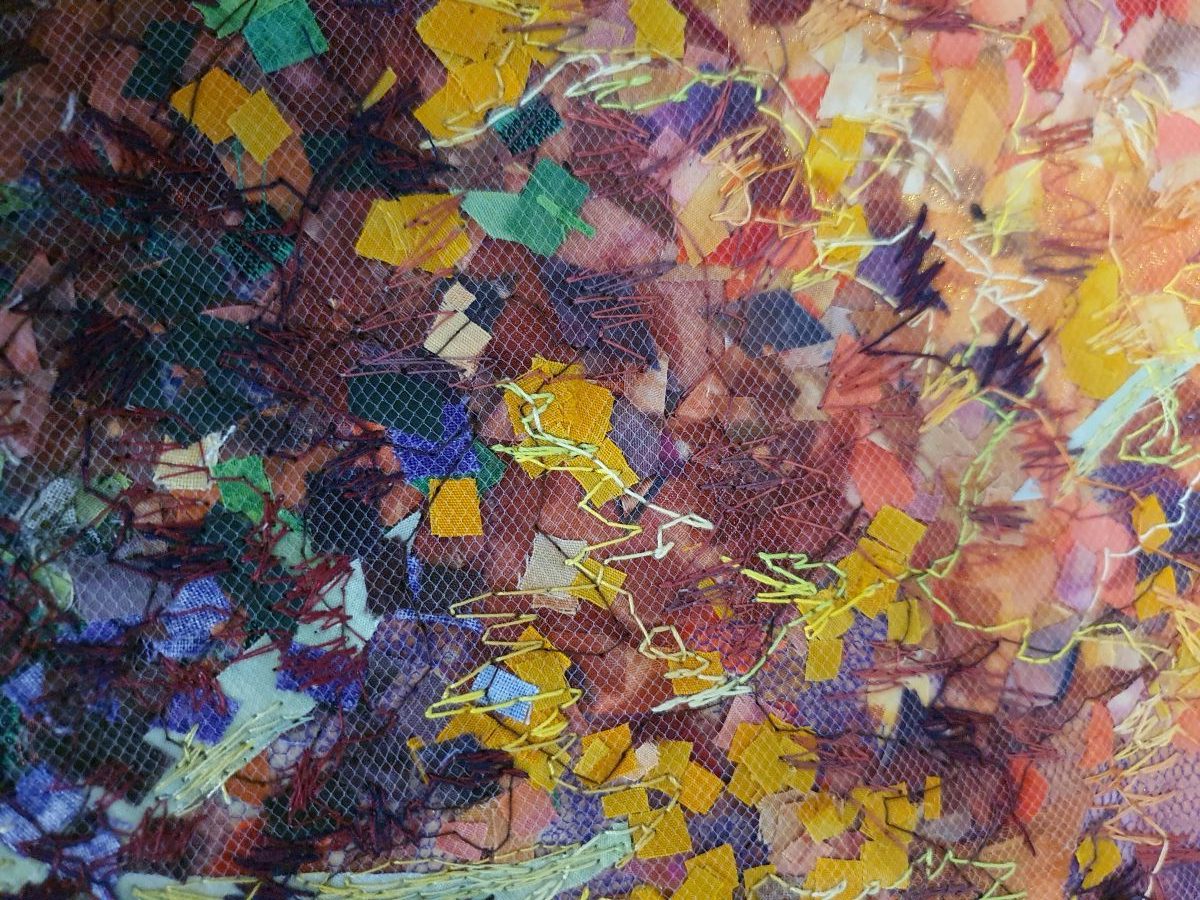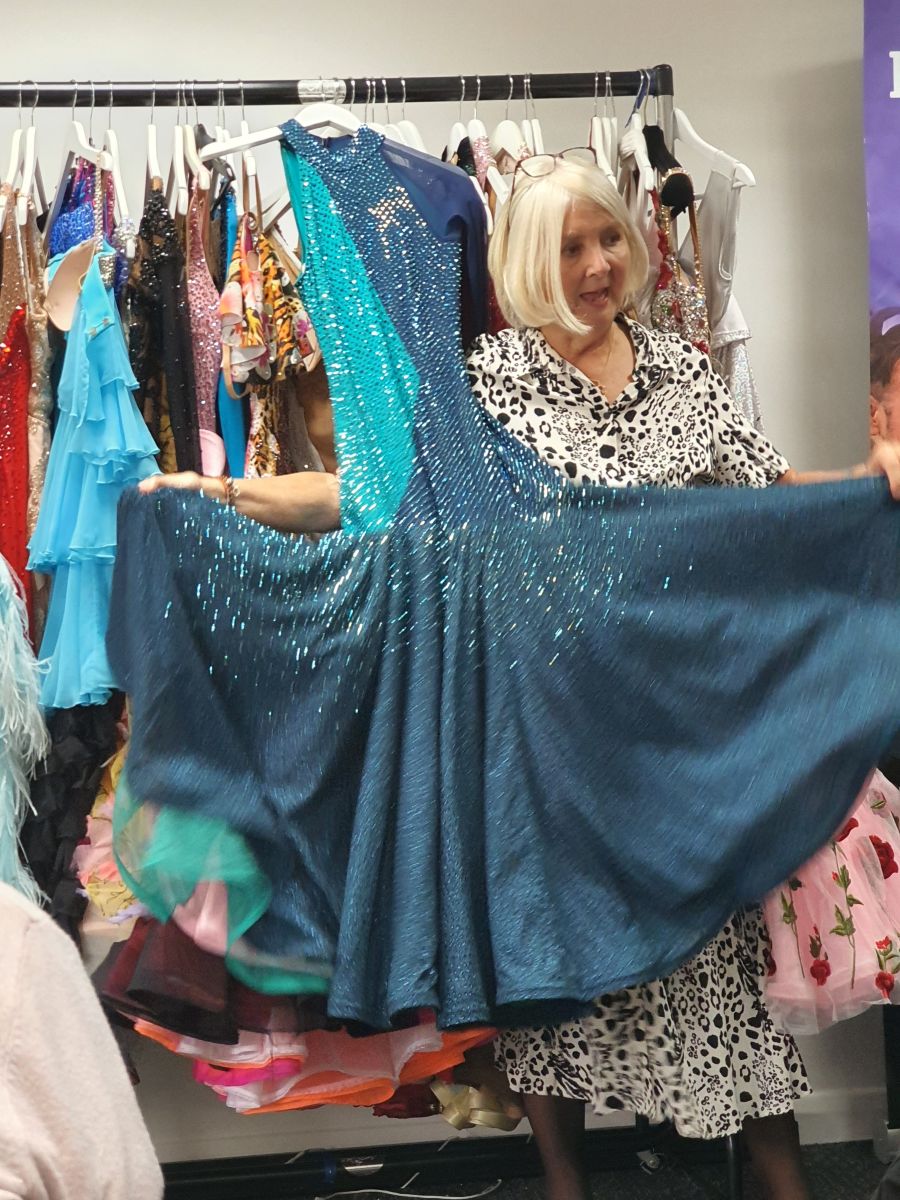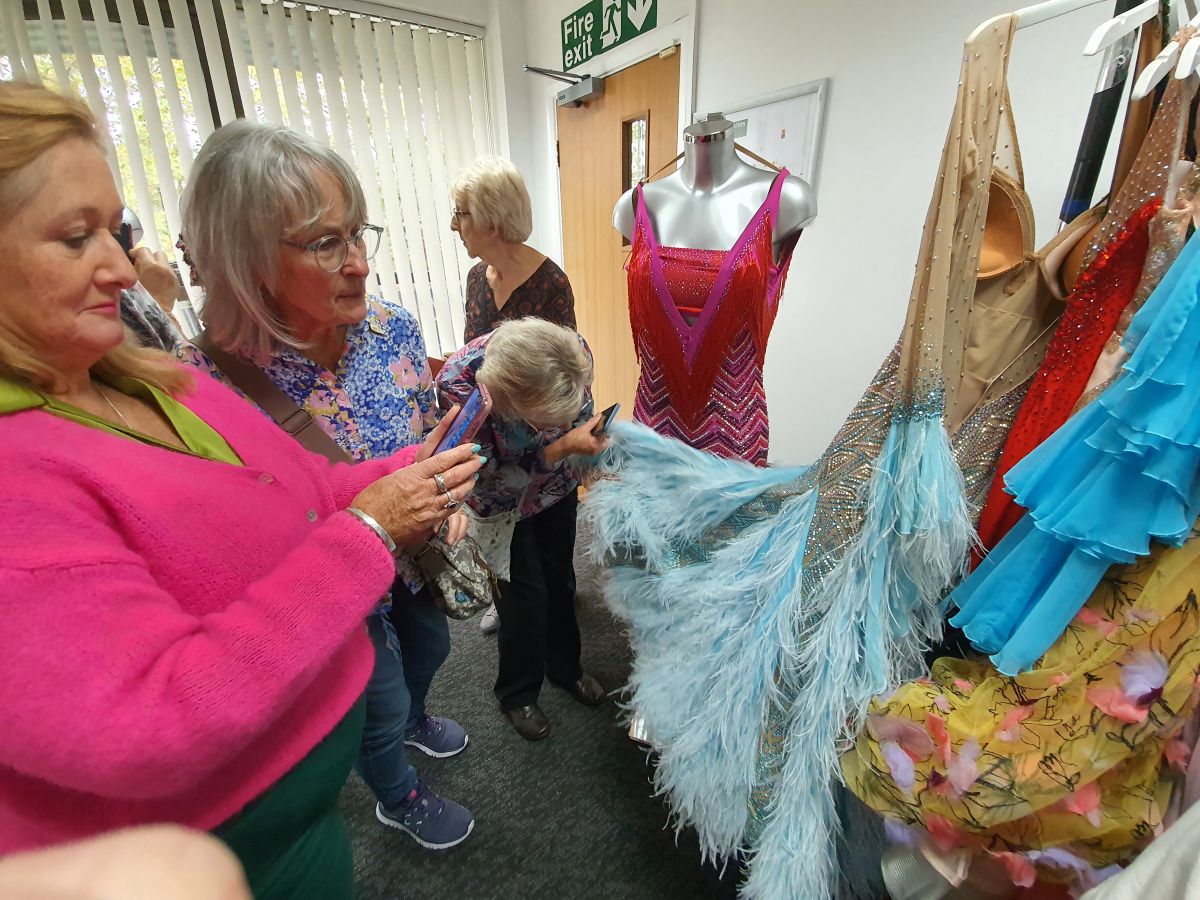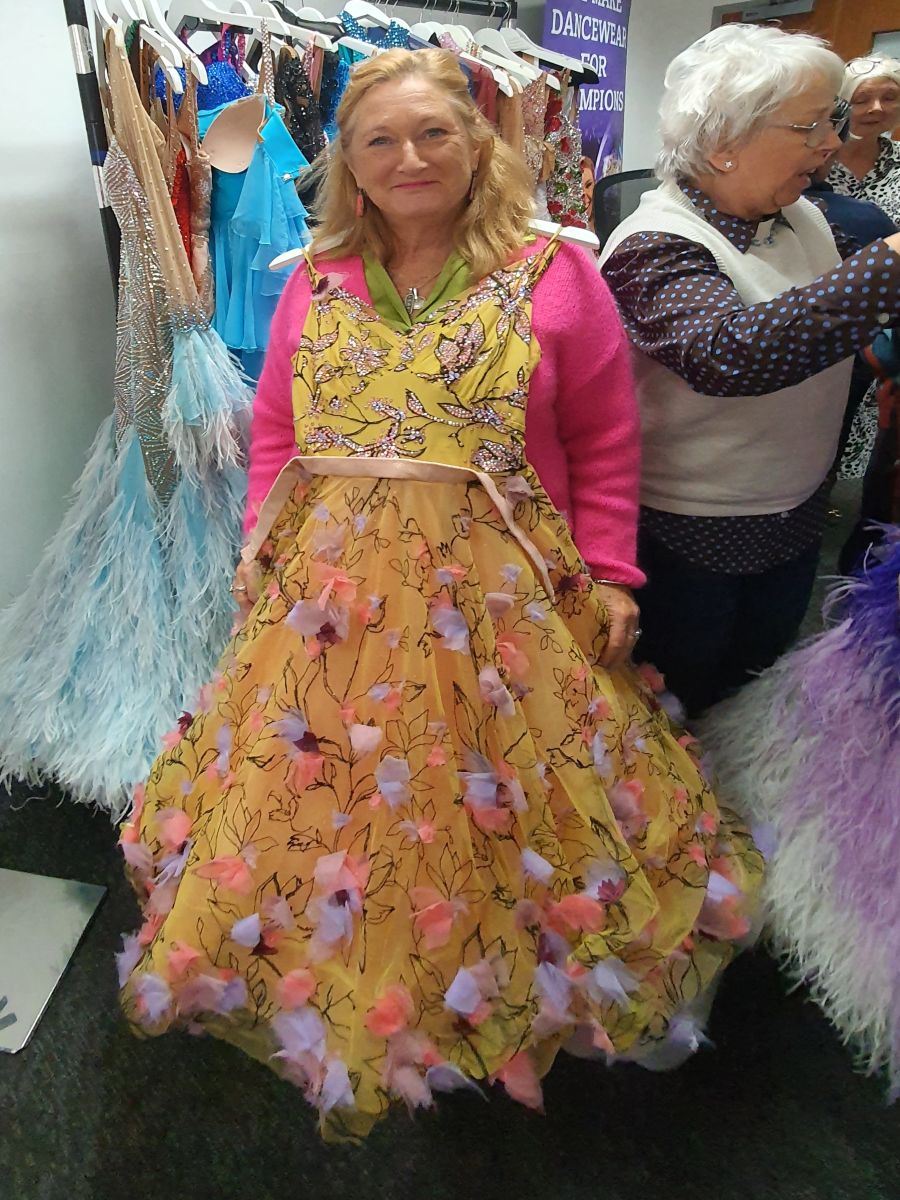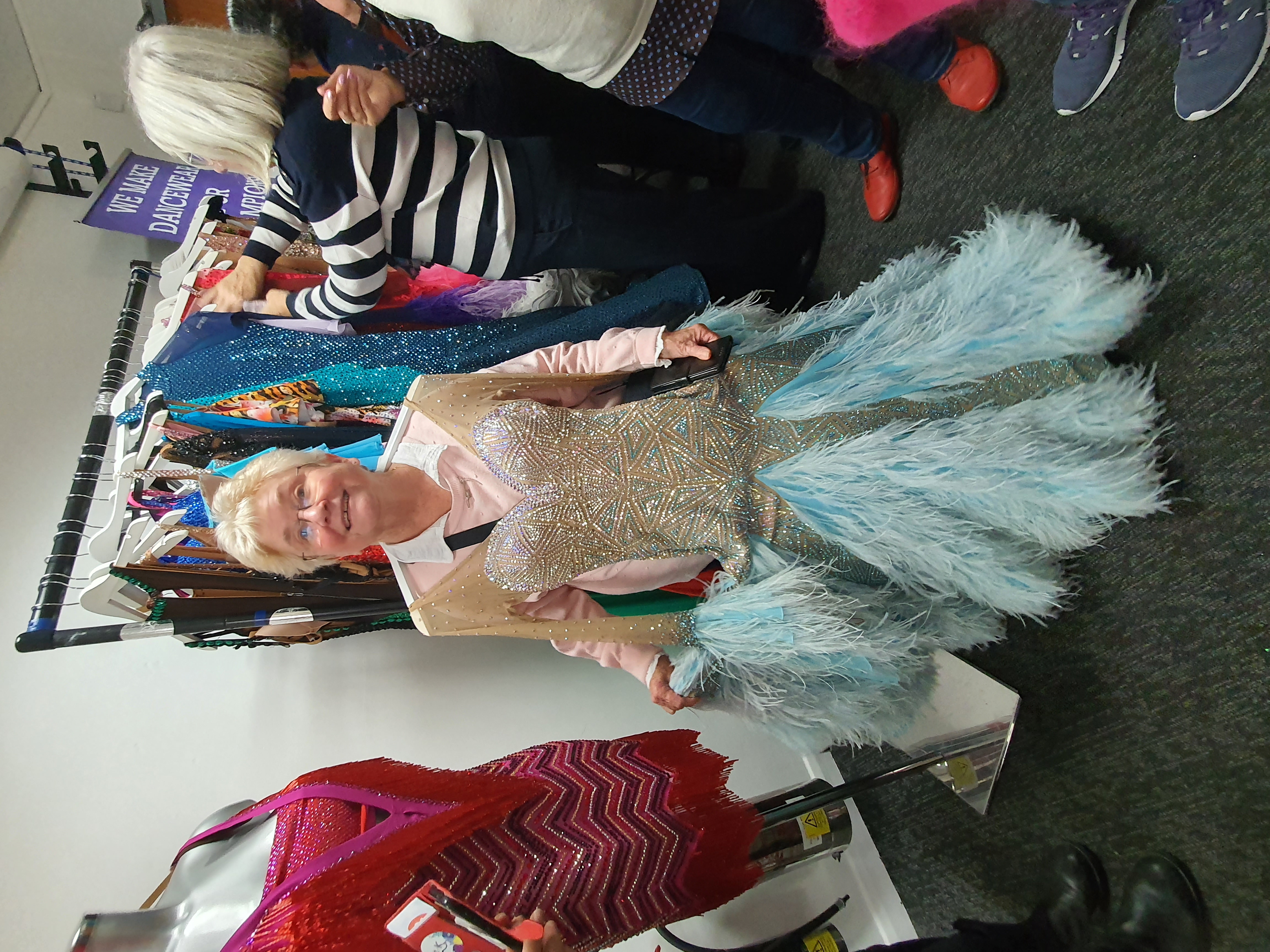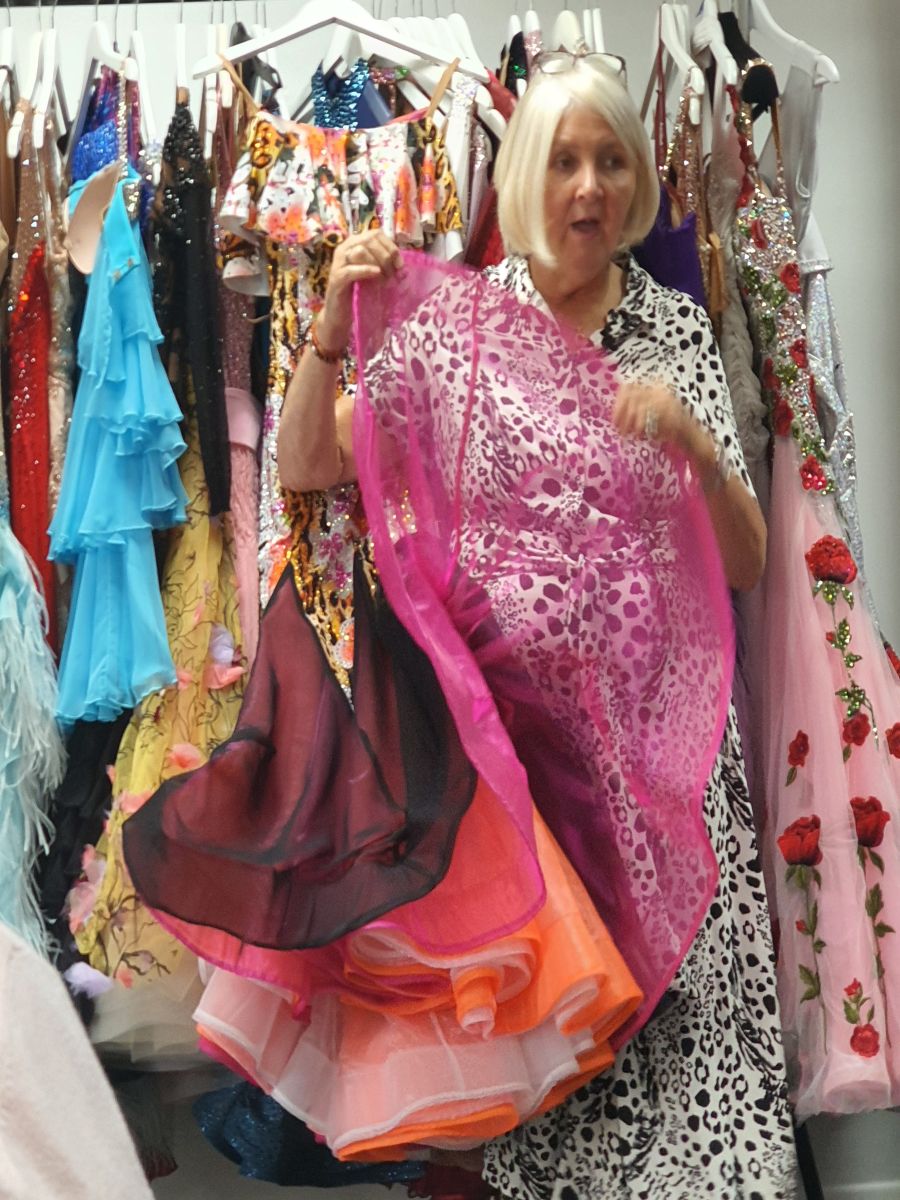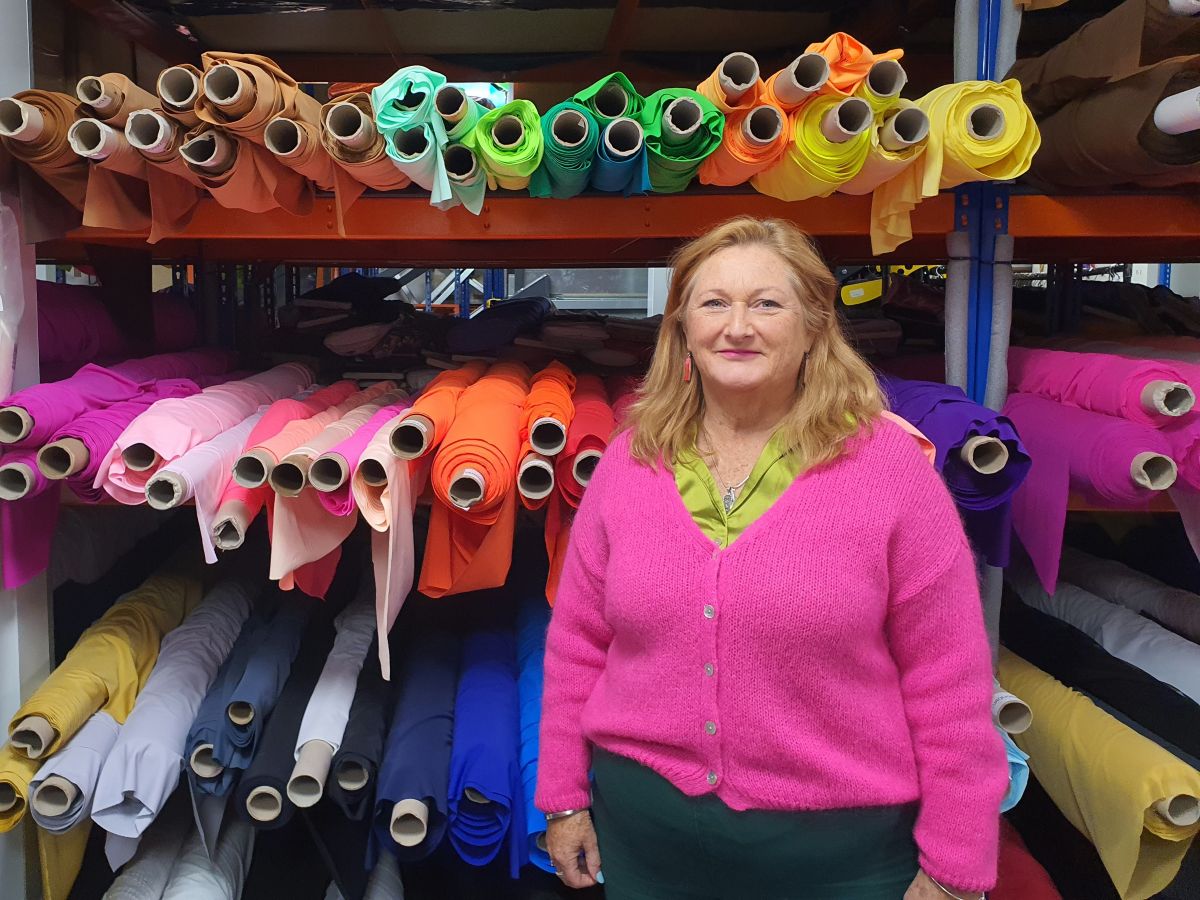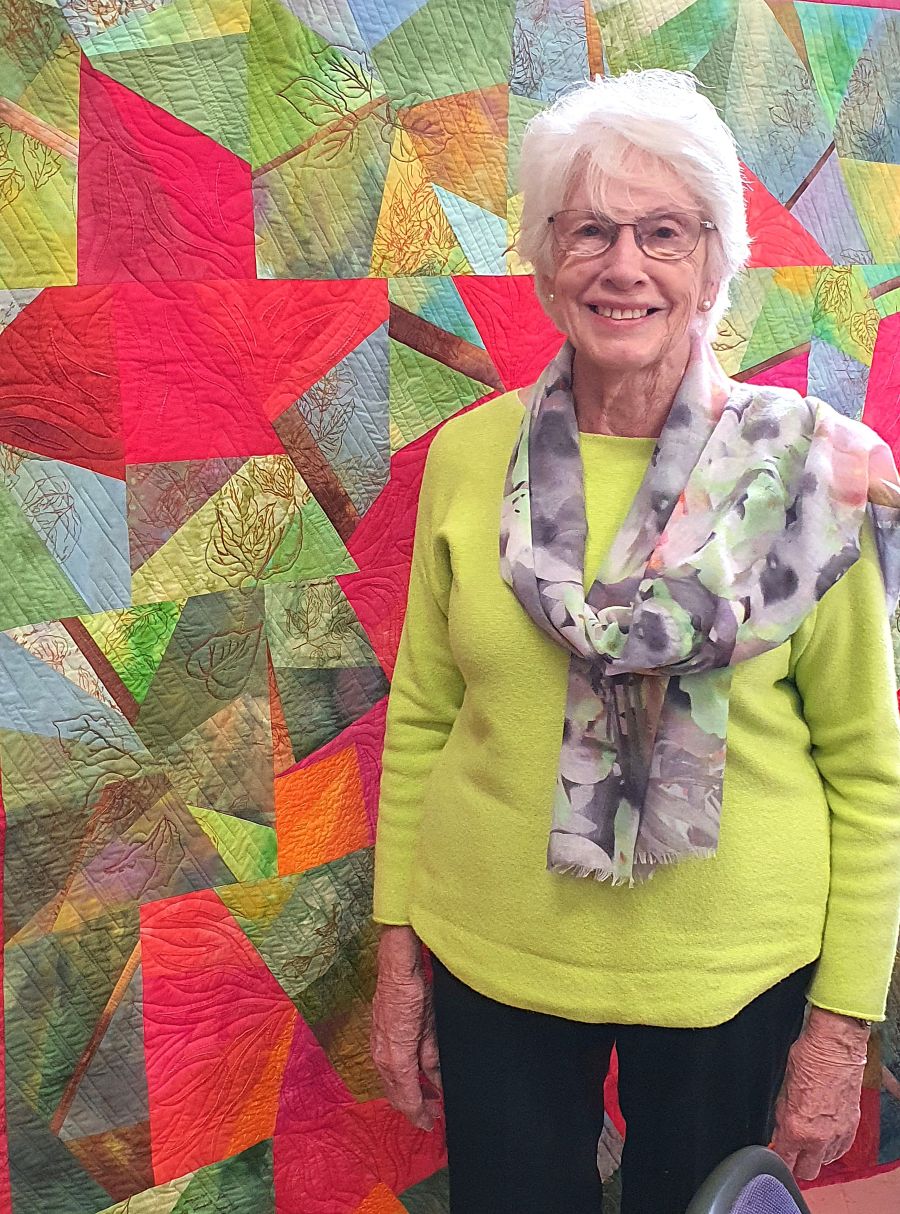 After a bit of a delay, here are the photos of Carol Dengate’s beautiful work that she showed us in our March meeting. ‘Showcase a member’ started as a new addition to our programme a couple of years ago. It’s an opportunity for an individual member to put on a ‘pop-up show’ of their work during a sit-and-sew afternoon, without the added stress of doing a talk or entering a more formal exhibition. It’s a great tradition that I hope will continue in the future. Some of our members exhibit and sell work, many give embroideries as presents, and some have work on their walls at home. But we also have cupboards bursting with embroidery that is hidden away in cupboards and never sees the light of day. ‘Showcase a member’ is a good opportunity to see how one person’s work has changed and developed over the years.
After a bit of a delay, here are the photos of Carol Dengate’s beautiful work that she showed us in our March meeting. ‘Showcase a member’ started as a new addition to our programme a couple of years ago. It’s an opportunity for an individual member to put on a ‘pop-up show’ of their work during a sit-and-sew afternoon, without the added stress of doing a talk or entering a more formal exhibition. It’s a great tradition that I hope will continue in the future. Some of our members exhibit and sell work, many give embroideries as presents, and some have work on their walls at home. But we also have cupboards bursting with embroidery that is hidden away in cupboards and never sees the light of day. ‘Showcase a member’ is a good opportunity to see how one person’s work has changed and developed over the years.
Carol’s pop-up show was a great example of this. She showed work from her City and Guilds Patchwork and Quilting course, including samples and sketchbooks. The thumbnail pictures here are from a book of samples of quilting techniques.

One piece to highlight is the miniature quilt (below) which earned a ‘Highly Commended’ at the Festival of Quilts. The miniature quilt category is all about a design ‘shrunk’ to a miniature scale, but without losing the quality and detail that you would have in a bigger quilt. I think the purse below also won an accolade at the Festival of Quilts.
 Carol’s work spans a wide range of techniques, including patchwork and quilting, hand-stitch and machine embroidery. What a lovely combination of delicate stitching with confident design and colour. Scroll down for some examples below. Thank you for sharing your work with us Carol.
Carol’s work spans a wide range of techniques, including patchwork and quilting, hand-stitch and machine embroidery. What a lovely combination of delicate stitching with confident design and colour. Scroll down for some examples below. Thank you for sharing your work with us Carol.

